JIM MOORE
FASHION CONSULTANT / CREATIVE DIRECTOR
JIM MOORE
Creative Director Jim Moore has spent virtually his entire career—40 years—with GQ. His sharp eye, solid reputation, and creative influence have helped develop the magazine‘s signature style as it has evolved through the years. Moore has collaborated with many of the world‘s most talented photographers, designers, and celebrities to produce distinctive, cutting-edge fashion pages.
In 1980, Jim Moore landed at GQ as an assistant and rose through the ranks to serve as the revered magazine’s Fashion Director, Creative Director, and now Creative Director-at-Large. Along the way, he brought men’s fashion out of the shadows. He celebrated it, boosted it, occasionally translated it, and always elevated it. He made the fantasy real, and the reality fantastic. He brought the world of fashion into the mainstream. He styled models, movie stars, world-famous musicians, and US presidents, but he managed, no matter the wattage, to keep the reader foremost in mind, which is why the work stands up 40 years later. Moore’s legendary career is celebrated in HUNKS & HEROES: FOUR DECADES OF FASHION AT GQ illustrating the pivotal role he played in in reshaping men’s style.
Creative Director Jim Moore has spent virtually his entire career—40 years—with GQ. His sharp eye, solid reputation, and creative influence have helped develop the magazine‘s signature style as it has evolved through the years. Moore has collaborated with many of the world‘s most talented photographers, designers, and celebrities to produce distinctive, cutting-edge fashion pages.
In 1980, Jim Moore landed at GQ as an assistant and rose through the ranks to serve as the revered magazine’s Fashion Director, Creative Director, and now Creative Director-at-Large. Along the way, he brought men’s fashion out of the shadows. He celebrated it, boosted it, occasionally translated it, and always elevated it. He made the fantasy real, and the reality fantastic. He brought the world of fashion into the mainstream. He styled models, movie stars, world-famous musicians, and US presidents, but he managed, no matter the wattage, to keep the reader foremost in mind, which is why the work stands up 40 years later. Moore’s legendary career is celebrated in HUNKS & HEROES: FOUR DECADES OF FASHION AT GQ illustrating the pivotal role he played in in reshaping men’s style.
KITH Spring 2022
Jim collaborated with Ronnie Fieg on the KITH Spring 2022 collection. Spring 2022 takes a pastoral tack, with slate, sky, sage, and sand as its primary colours and workwear and leisurewear mashups as its defining silhouettes.
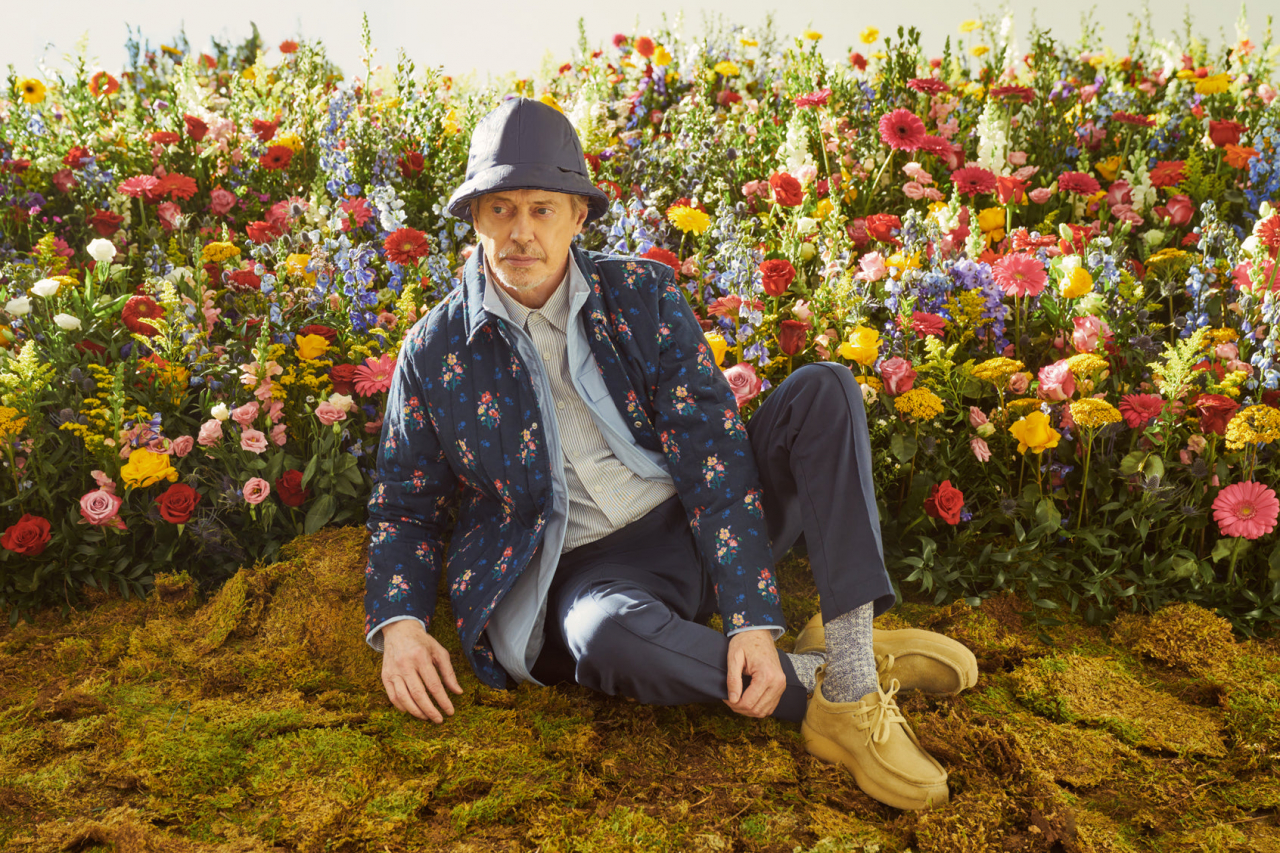
Todd Snyder x L.L. Bean
The Limited edition collection was inspired by the classic style of L.L. Bean and the scenic landscape of Maine.
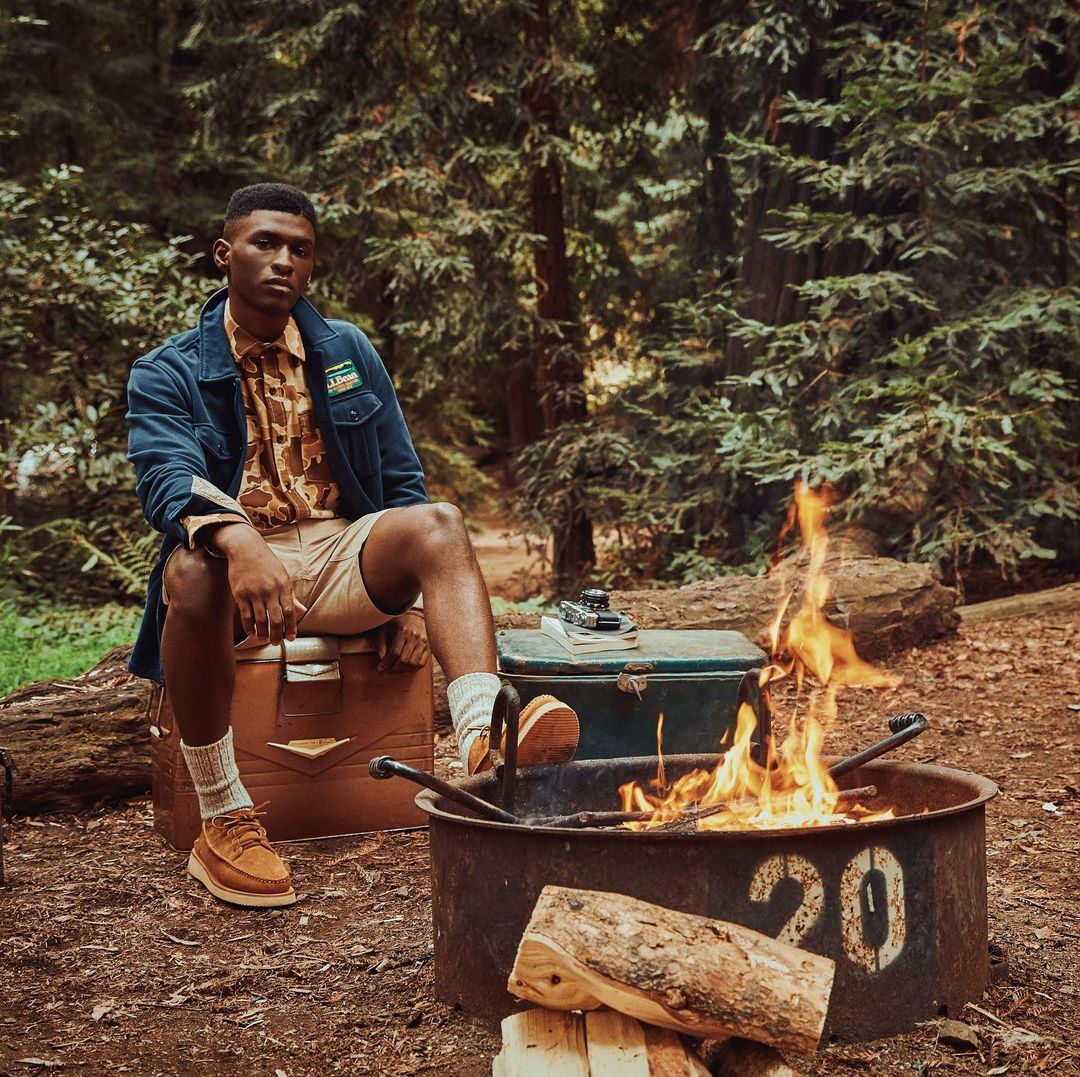
Todd Snyder: Fall Winter 2022
This collection pays homage to the evolution of the New American style. Jim worked with Todd Snyder to re-engineer the American classics juxtaposing tailoring, workwear, military and street style.
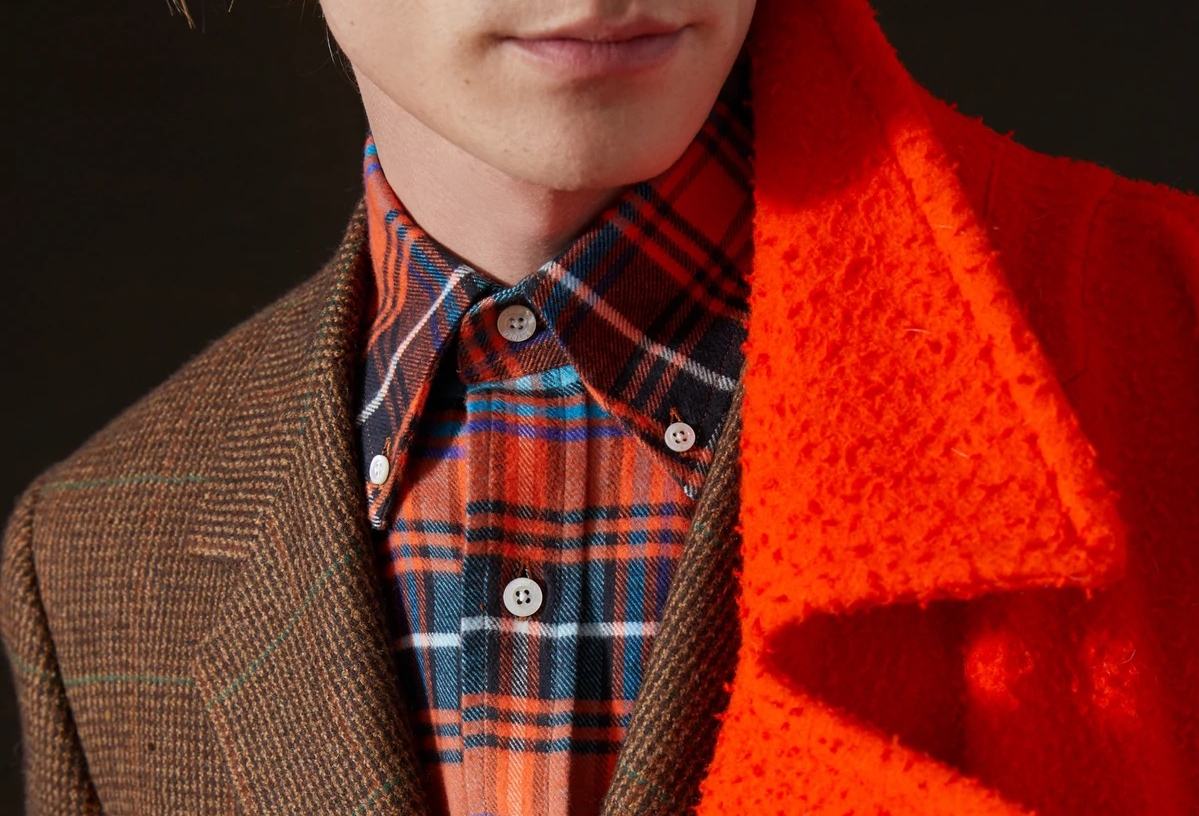
Perry Ellis Fall Winter 22
Jim Moore collaborated with Vice President of Design Thomas Harvey to present the relaunch of Perry Ellis America Fall 2022. Perry Ellis America Fall 2022 is inspired by American landscapes and is a modern take on classic American sportswear.
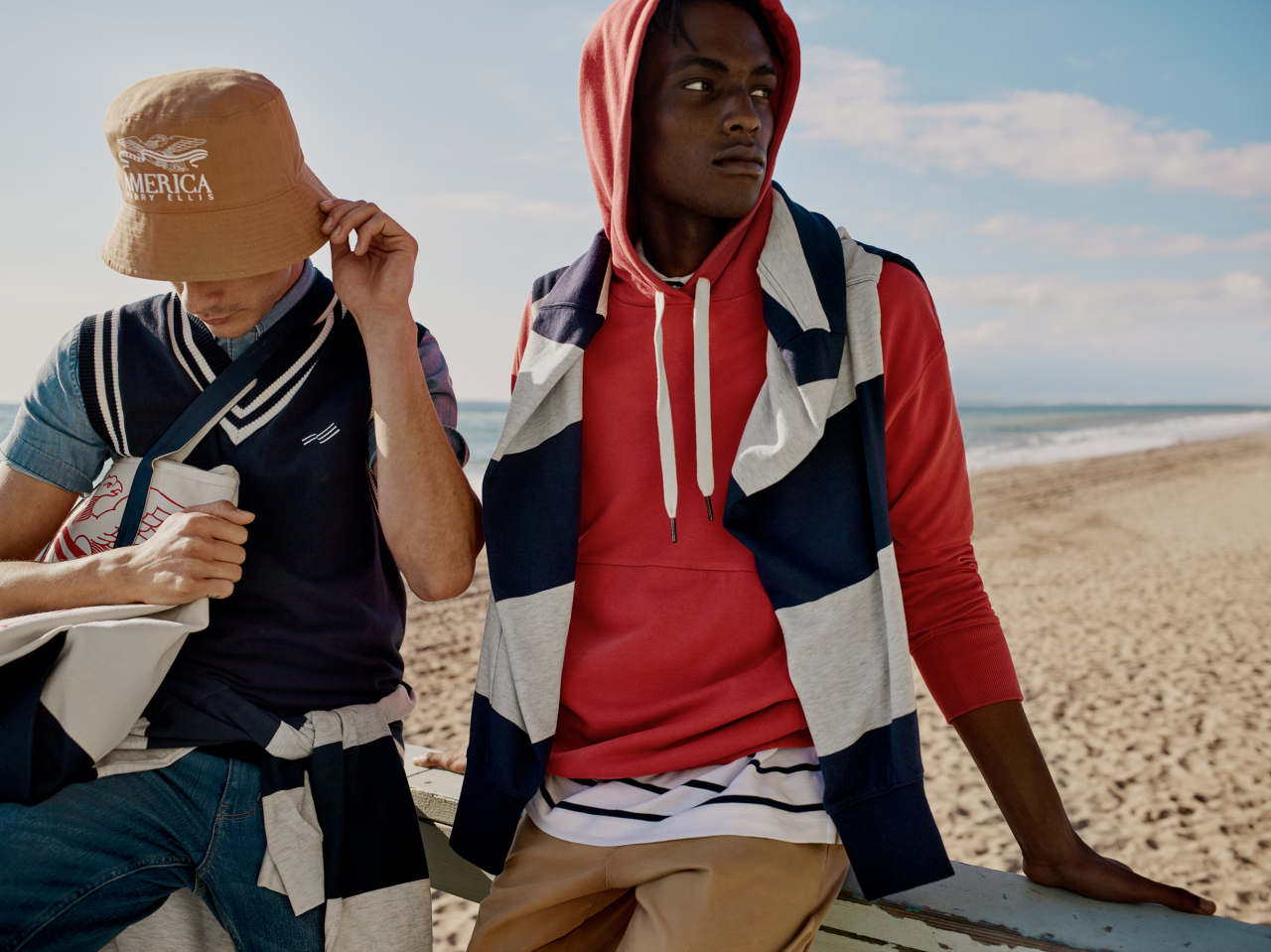
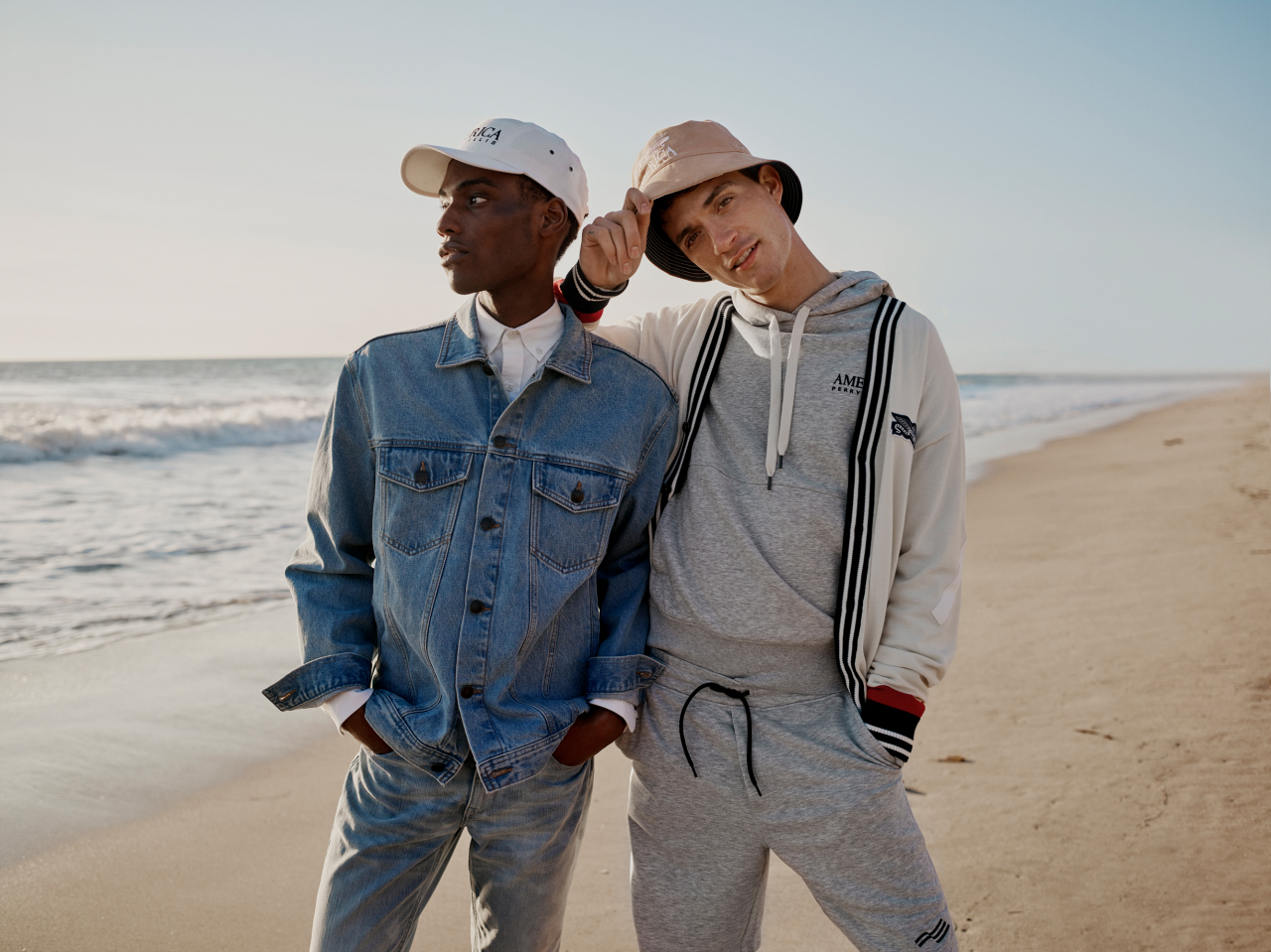
Kith’s 10th anniversary
Creative Director Jim Moore collaborated with KITH founder Ronnie Fieg on the brand’s 10th anniversary book, leading the visual narrative and collaborating on casting, design, photo shoots and overarching storytelling to commemorate the first decade of the iconic streetwear brand.
His creative vision and influence guided the direction of the KITH book which immediately sold out upon its release. The 300 page book encapsulates 10 years’ worth of memories, collaborations and exclusive first looks at new collections for the brand that has become the most relevant name in the industry.
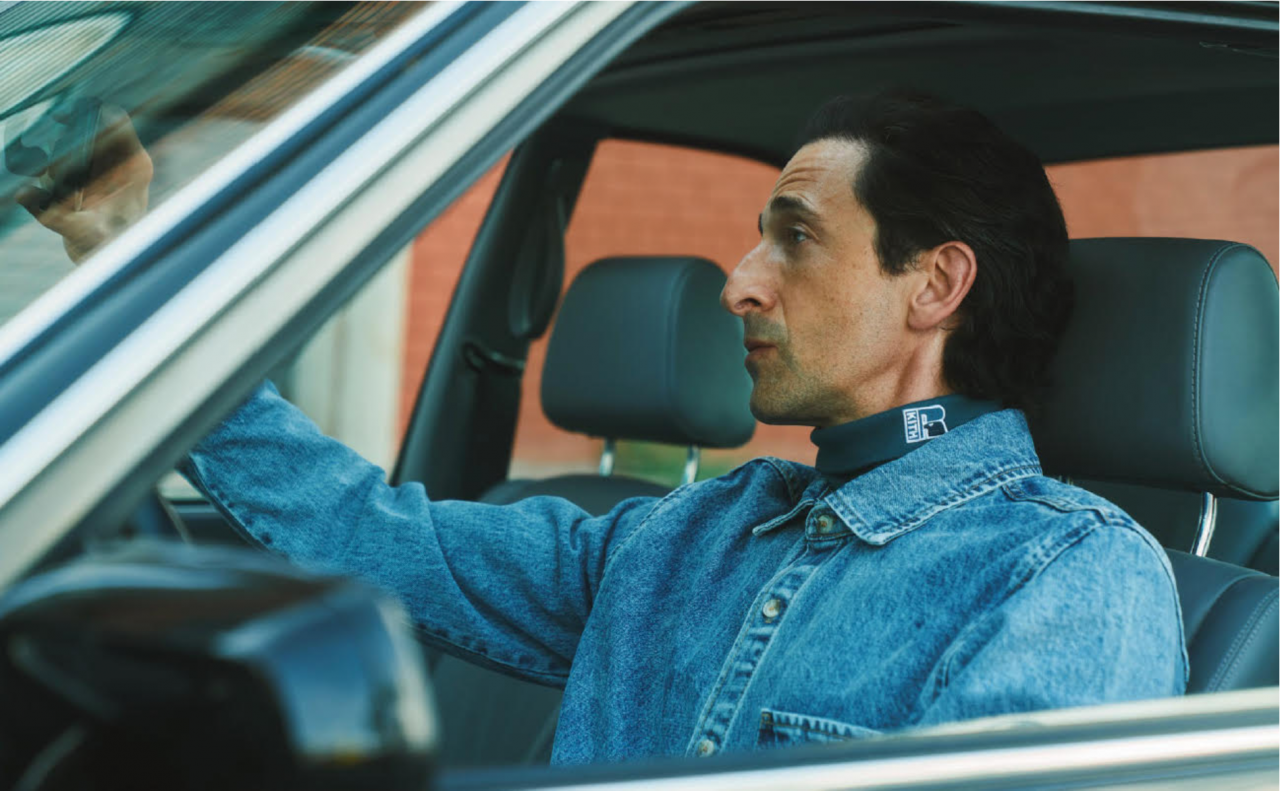
“Happy to be in a position to continuously learn. Spending the last three weeks with Jim has been such an incredible experience. Over 40 years of experience and still so humble and kind”
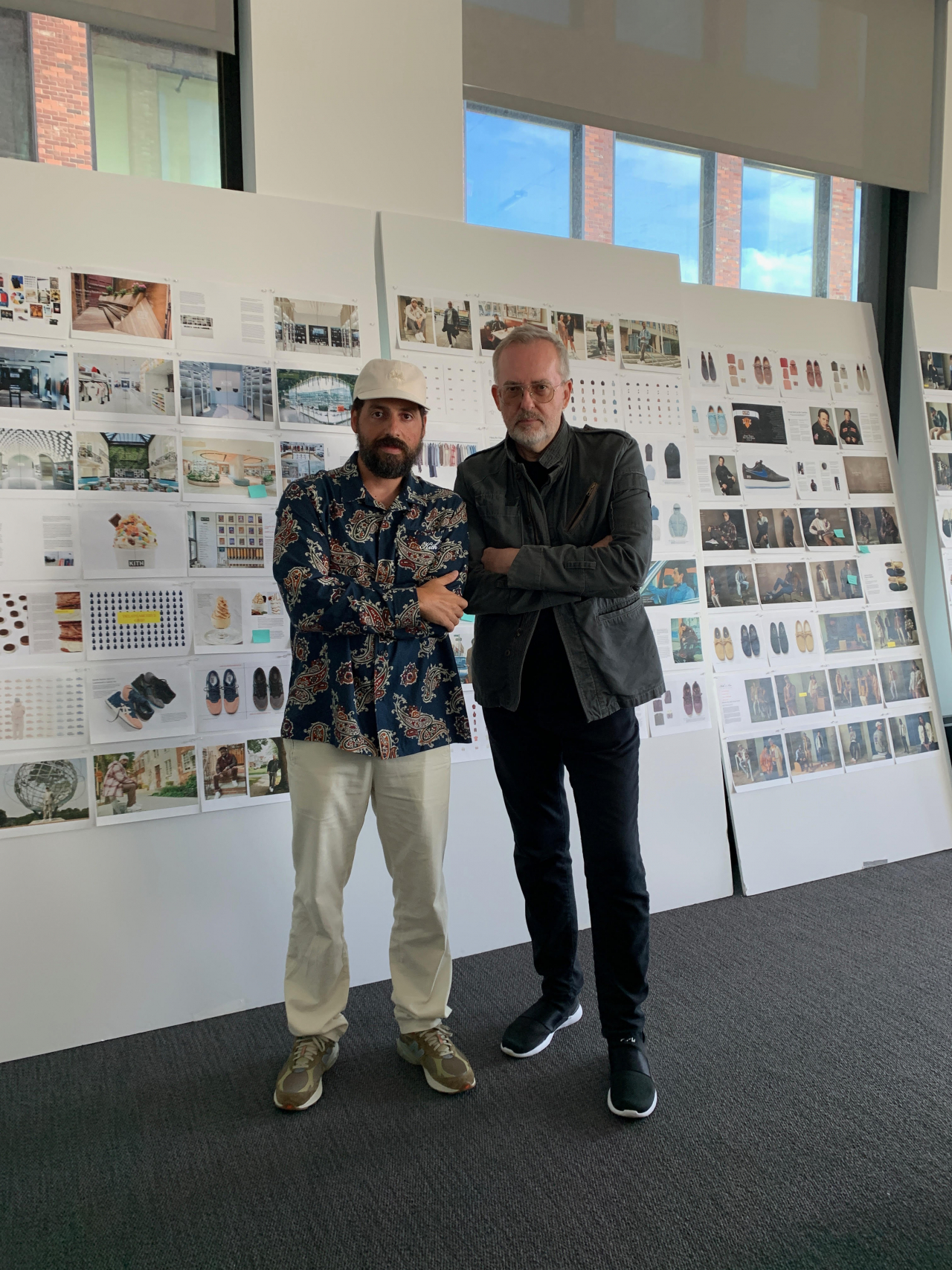
Complex Sneaker Podcast
GQ director Jim Moore talks through his career and points in it where sneakers interacted with his work, from shooting with Michael Jordan in the late 1980s to helping push athletic footwear to a new space in the wardrobe of the modern man. Moore also discusses his interactions in the past decade with more streetwear-specific designers like Virgil Abloh, Ronnie Fieg, and Kanye West.
The Complex Sneakers Podcast is co-hosted by Joe La Puma, Brendan Dunne, and Matt Welty. In this week’s episode, they are joined by Jim Moore.
Hunks & Heroes: Four Decades of Fashion at GQ
Jim Moore’s legendary career is celebrated in his book, HUNKS & HEROES: FOUR DECADES OF FASHION AT GQ, which illustrates for the first time the pivotal role he played in reshaping men’s style.
Moore takes us through 40 years of men’s fashion: featuring the most iconic GQ fashion looks, the magazine’s unforgettable covers and editorial shoots, essential styling tips like how to dress up denim or style a khaki suit, insights on developing your own personal style, and stories showcasing Moore’s knack at reworking the look of everyday men the magazine literally pulled off the street. This volume features 250 of Moore’s iconic men’s fashion photographs produced with internationally renowned image makers like Peggy Sirota, Craig McDean, and Inez & Vinoodh, and includes seminal GQ images of cultural icons such as celebrities, athletes, and politicians. This is the must-have style bible for all readers interested in men’s fashion, style, culture, and celebrity.
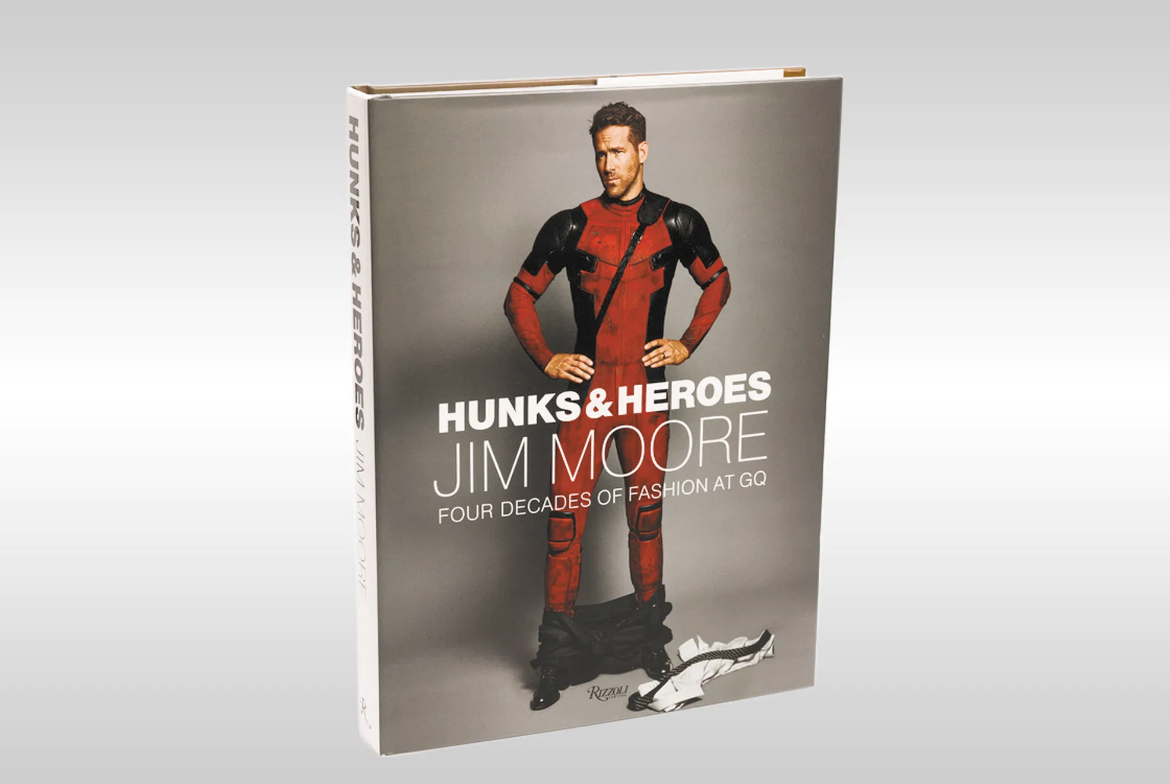
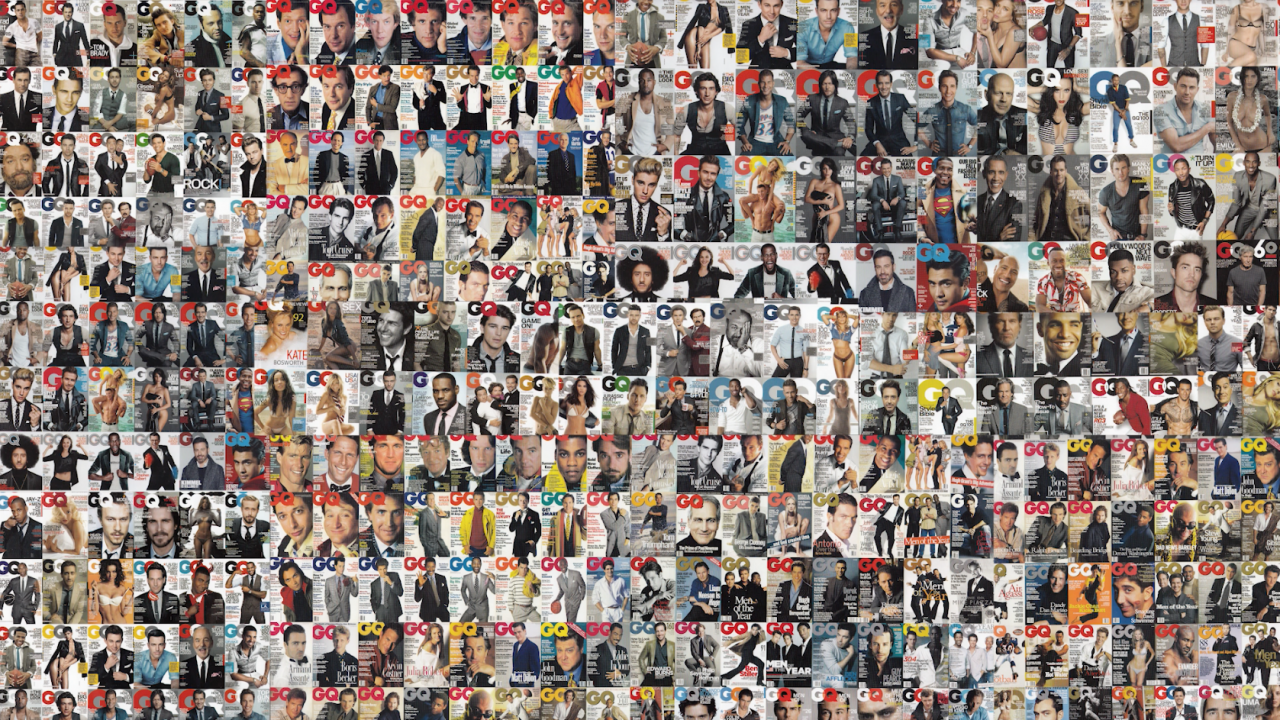
"Fashion, for me, has always been about creative expression. I was a fine artist for a while and dabbled in a few different things, but I always came back to fashion. "
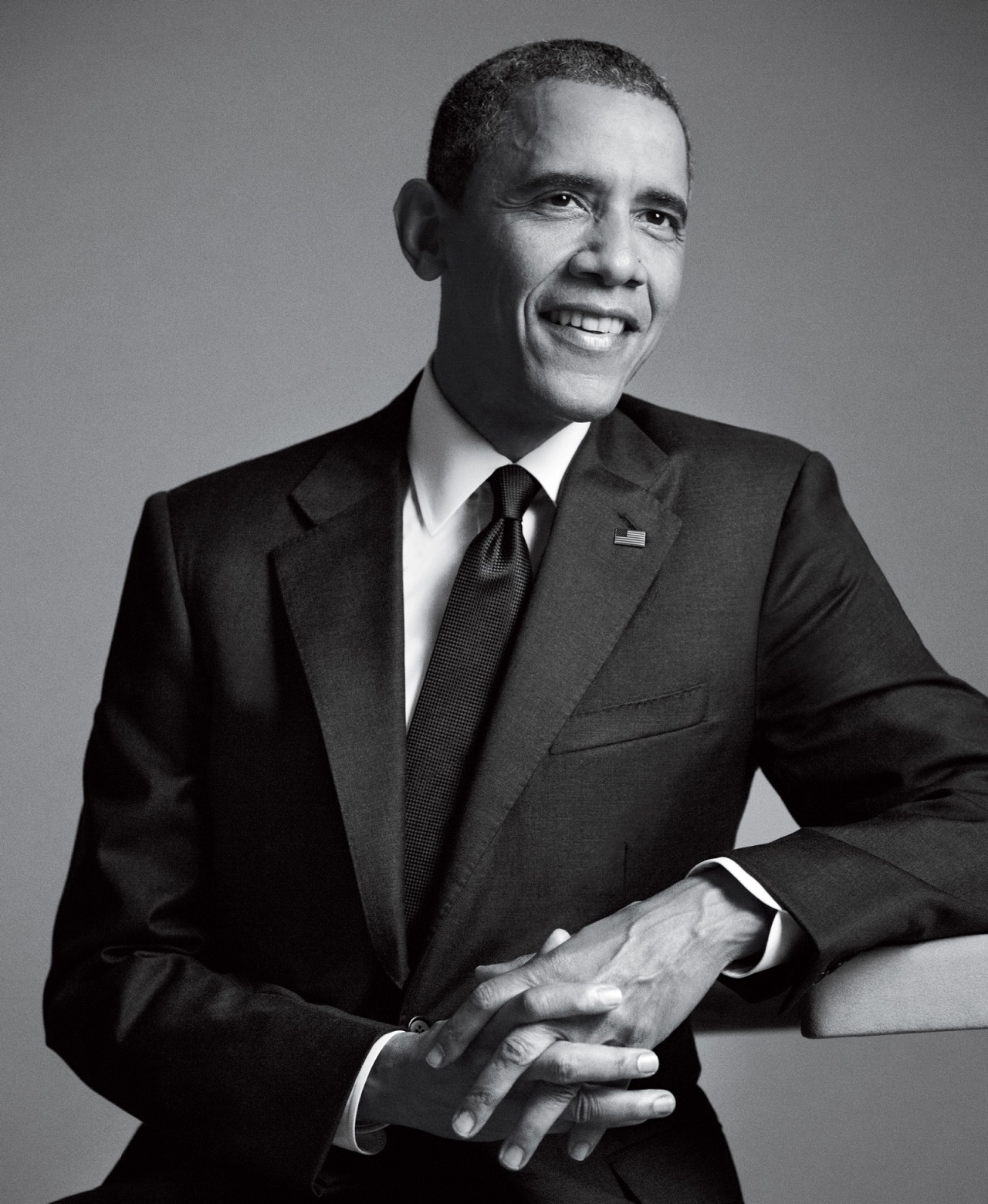
Mr. President
I had the incredible privilege of shooting President Barack Obama twice for GQ. The first time was when he was a senator just on the cusp of becoming president. I saw what he was wearing on the Senate floor and gasped. It wasn’t at all what I expected him to wear on the cover of GQ, but protocol meant that I wasn’t allowed to dress him in any of my clothes.
Luckily enough, he was able to run home and grab a dark suit, a white shirt, and a dark tie. In a way, Obama saved the day. The second time I worked with him was at the White House. The swagger was undoubtedly magnificent. He remembered the incident with the shirt and tie and said, “I wore this just for you.”
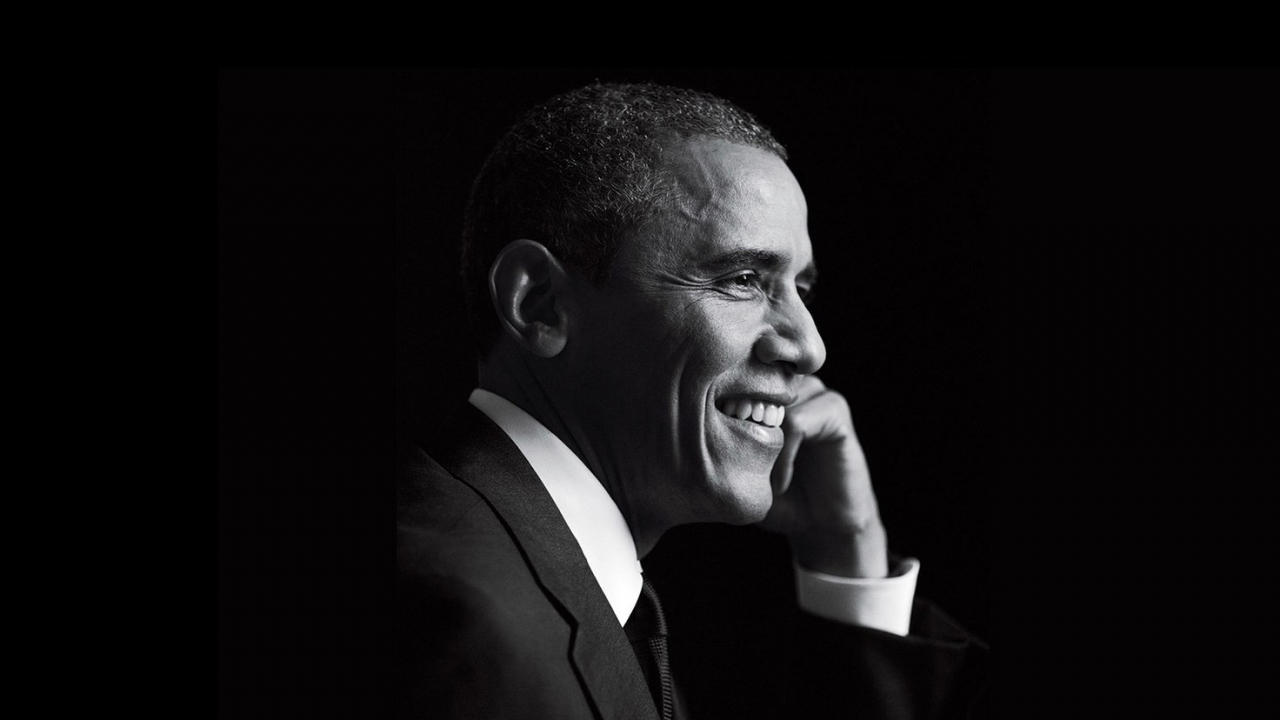

Music First
The first time that I worked with The Weeknd, it was instantly clear that he was incredibly talented. A quiet guy, he looked amazing in clothes. He embodied the perfect GQ formula: A star on the rise wearing cool clothes. This was Yeezy Season 1, a GQ exclusive.
Working with musicians is always exciting, whether they’re launching their first record or their tenth record. Frank Ocean is another inspirational talent who has exploded onto the scene in remarkable ways. This was a shoot I did with him and his buddies, including Tyler, the Creator, in Southern California. We put him in sport coats, which is a little bit geezer, but styled them in a really cool way.
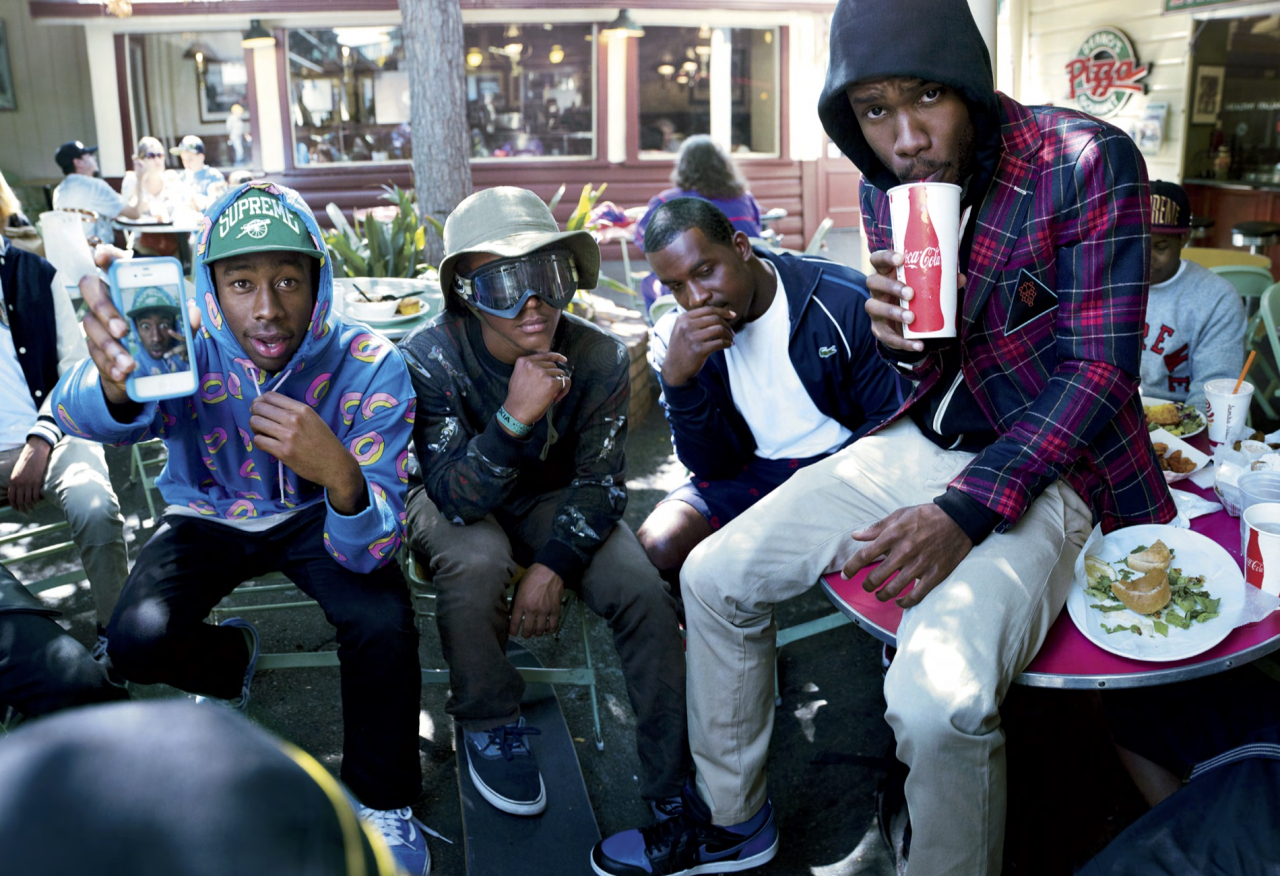
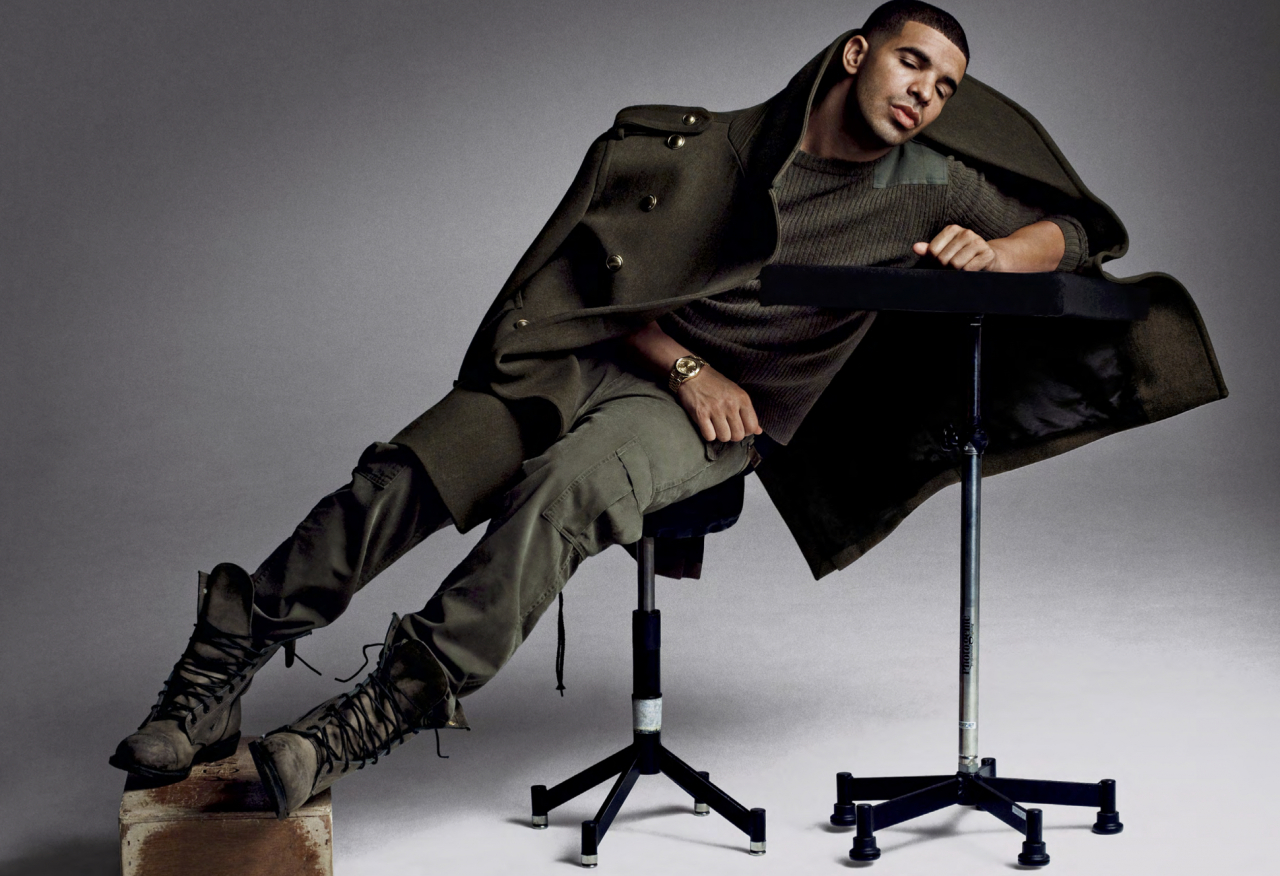
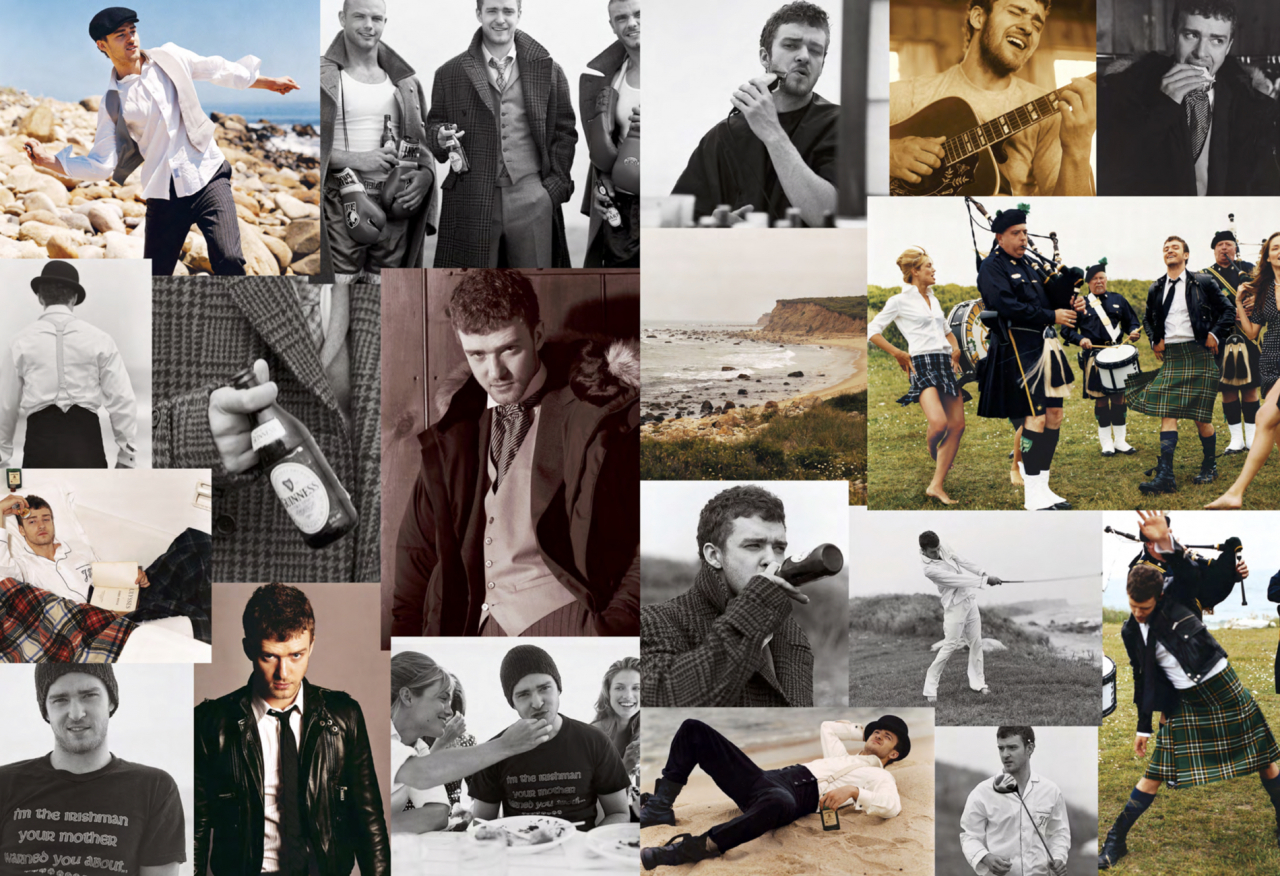
"If GQ is, as it’s been dubbed, 'the men’s fashion Bible,' then Jim is Fashion Jesus."
My Friend Kanye
I met Kanye West over 15 years ago. I first met him by asking him to perform at a party thrown to celebrate my first 25 years at GQ. We were in Milan, and he played into the night. Afterward, we talked even later into the night. We became fast friends.
Once, after boarding a transatlantic flight, I felt a tap on my shoulder. There was Kanye. He moved me to the seat next to him and proceeded to talk to me the entire flight. I hadn’t gotten any sleep the night before that flight, but somehow I stepped off the plane completely inspired by our discussion. It’s like that with Kanye. When you’re caught up in conversation with him, hours just disappear. We’re both completely obsessed with deconstructing everything—with getting to the essential truth—and I have endless respect for him. I couldn’t treasure our friendship more.
I’ve worked with Kim Kardashian twice, and this series (there’s the car again) is one of my favorite shoots. I collaborated on it with the wonderful Madeline Weeks, who dressed Kim.
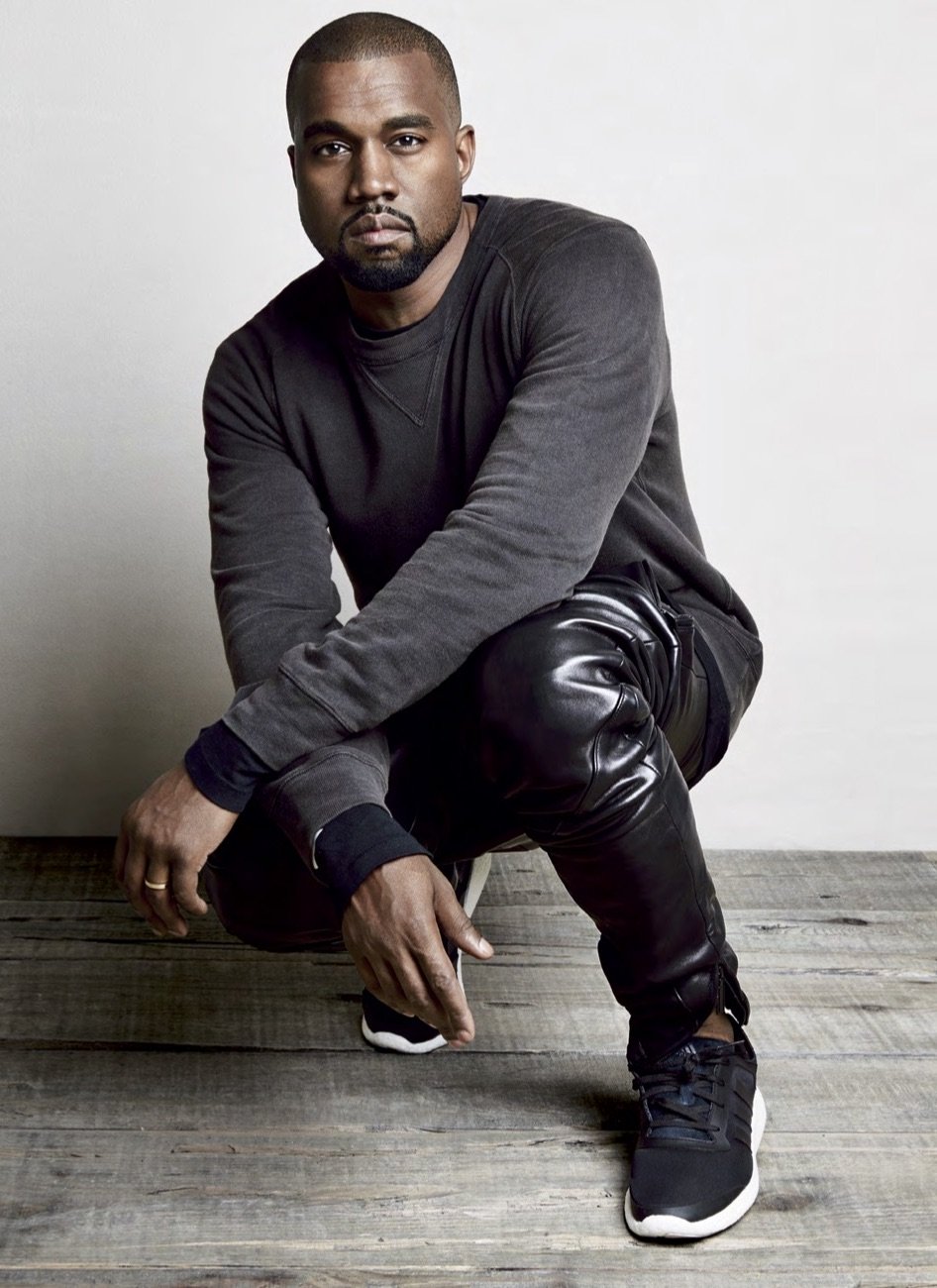

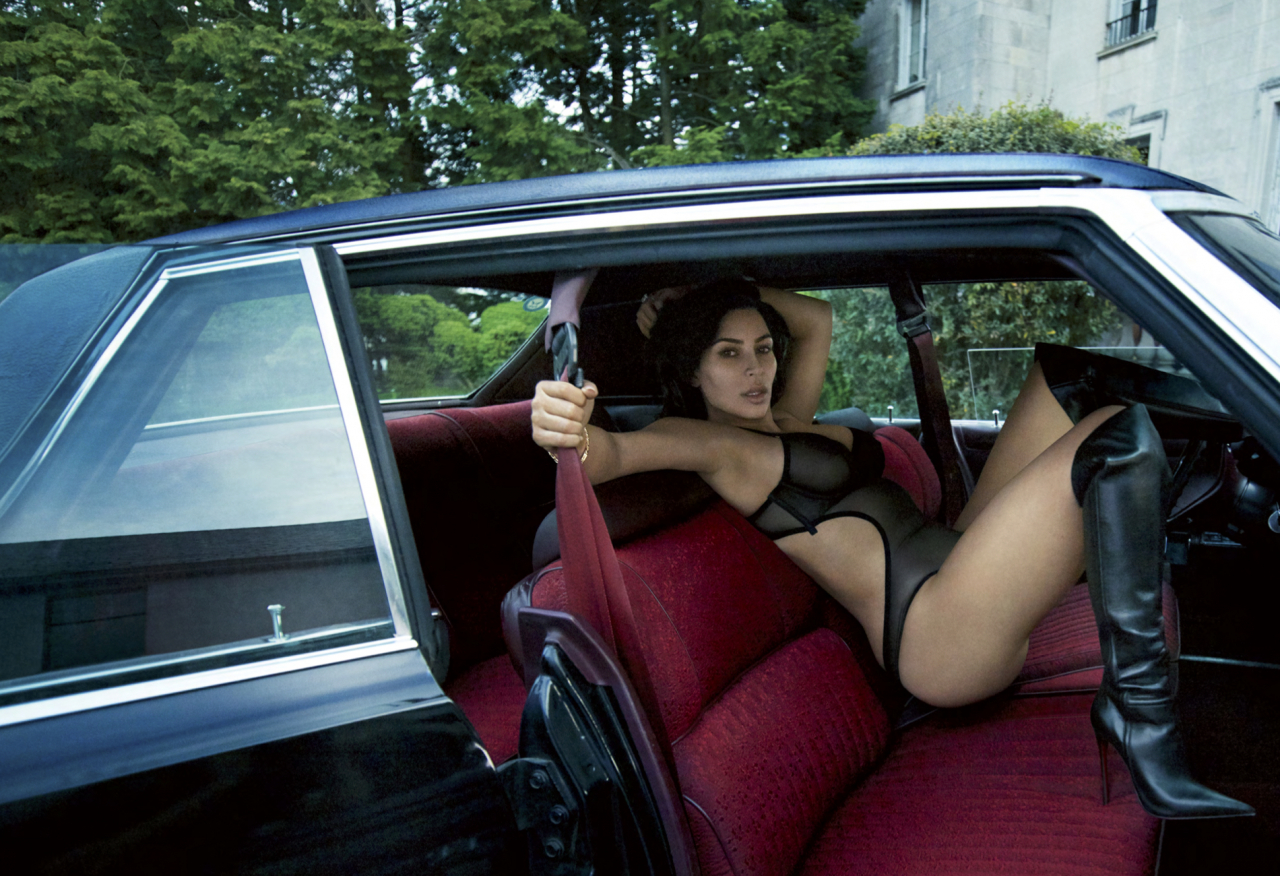
"You were able to embrace me, embrace all of the people that you’ve captured and to give room for people to have their own creativity while bringing your touch and experience into every one of the photos seen here. You’ve created something iconic."

Send in the Clowns
Sometimes comedians make the very best photo subjects. They love to get into the conceptual idea of fashion. Whether it’s Jimmy Fallon and Justin Timberlake playing Dean Martin and Jerry Lewis, or Bill Murray just looking suave and sophisticated in a wind storm of papers, or the guys from The Hangover at a public restroom—there’s so much that you can do with people who want to have fun.
Often, they’ll bring their own ideas. In the case of Stephen Colbert, it was his idea to shoot all around New York. It’s my job, of course, to make sure that, above all, the clothes show—and to remember that even when we’re winking at the reader, we’re doing it with sophistication.
Actor Attitude
There’s an interesting balancing act when you’re working with celebrities. You want to make them feel supported in front of the camera, but you also need them to venture out of their comfort zone.
Adjusting the tiniest details on set can make a huge difference in front of the camera. Maybe you give a bottle of orange soda to the cool and collected Armie Hammer? Or get Chris Pratt clowning around in a gas station? Or maybe you get him looking like James Dean? Large dogs also always do the trick, especially with Eddie Redmayne and Chris Hemsworth. The challenge is often to make a handsome guy also look interesting—even arresting, at times. Your gimmick can’t be too strong, otherwise the clothes vanish from the scene. It’s the small elements that help make the big impact.
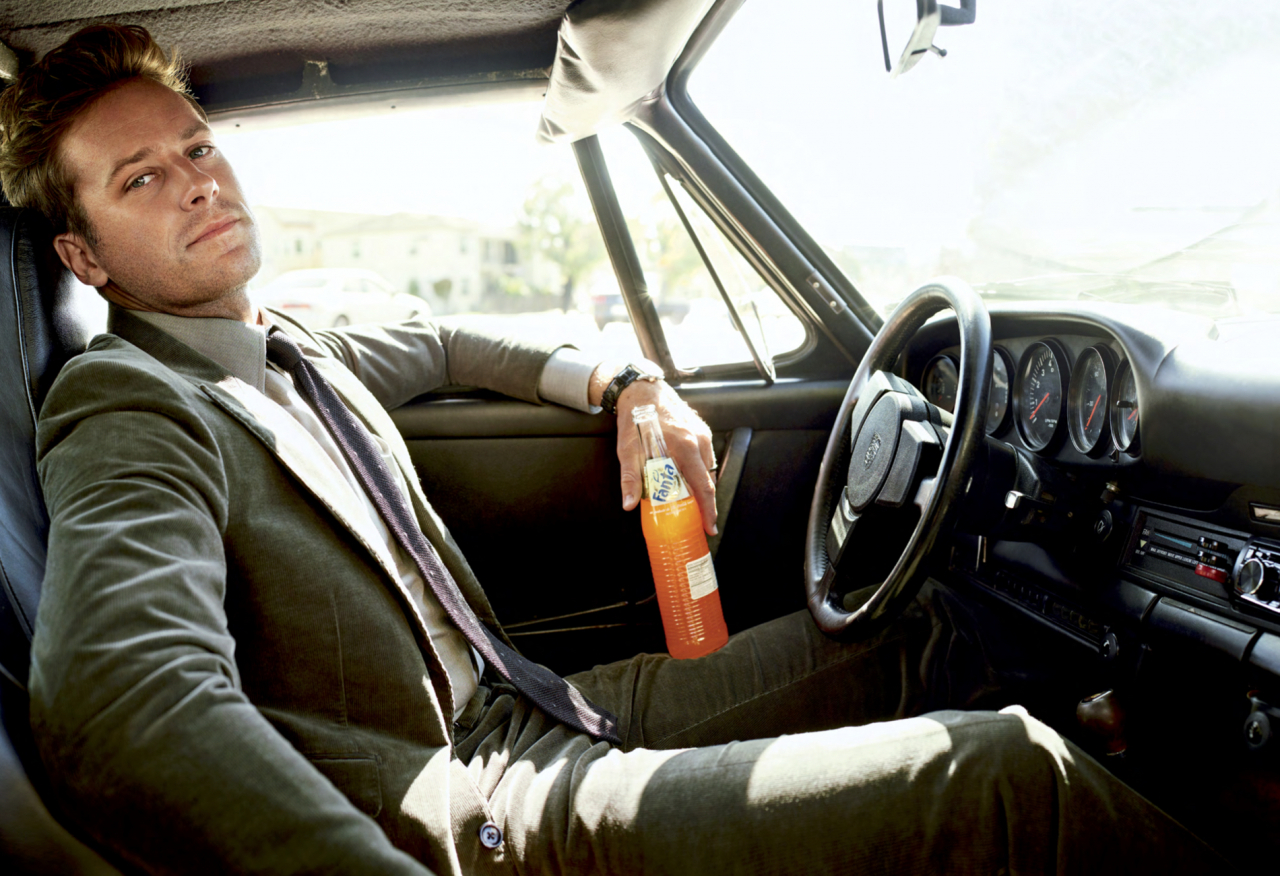
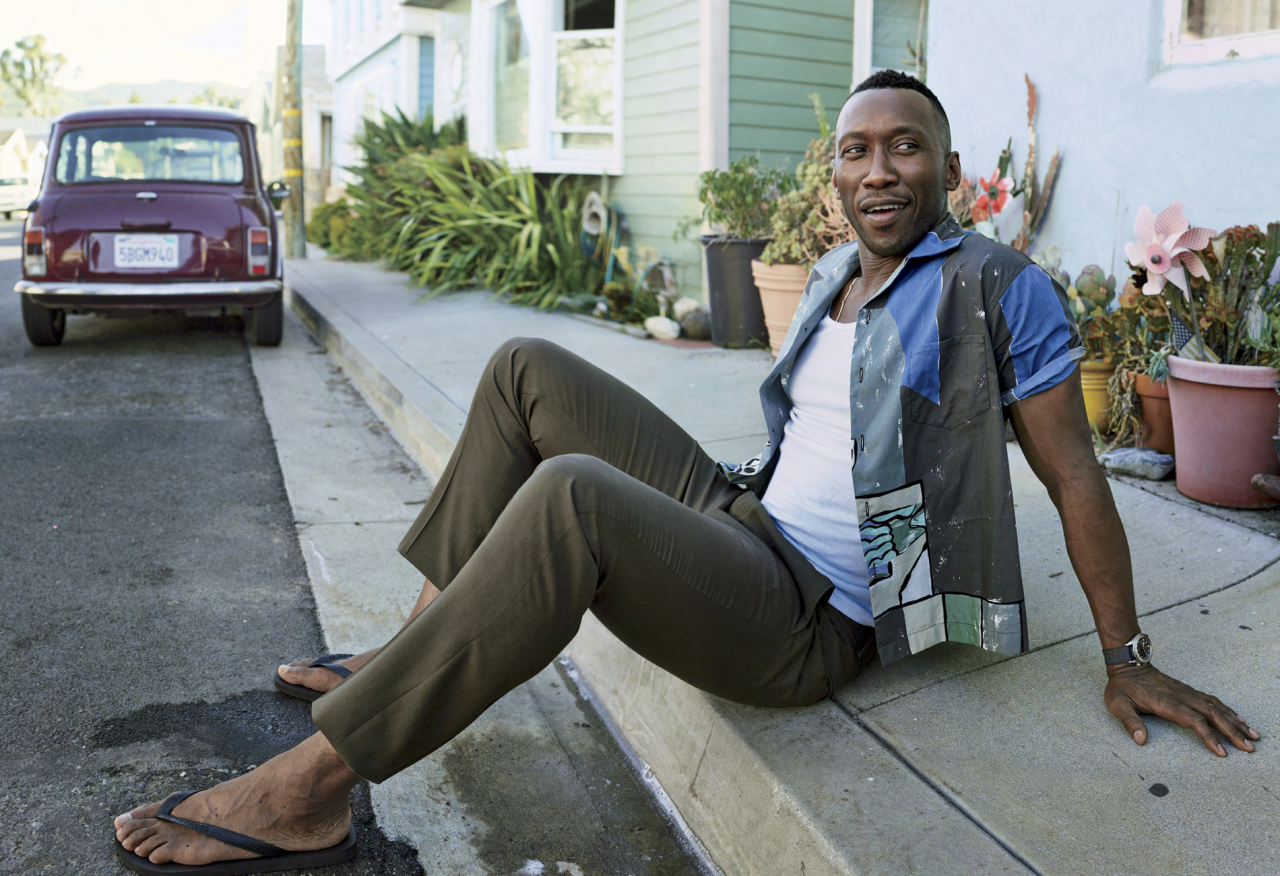
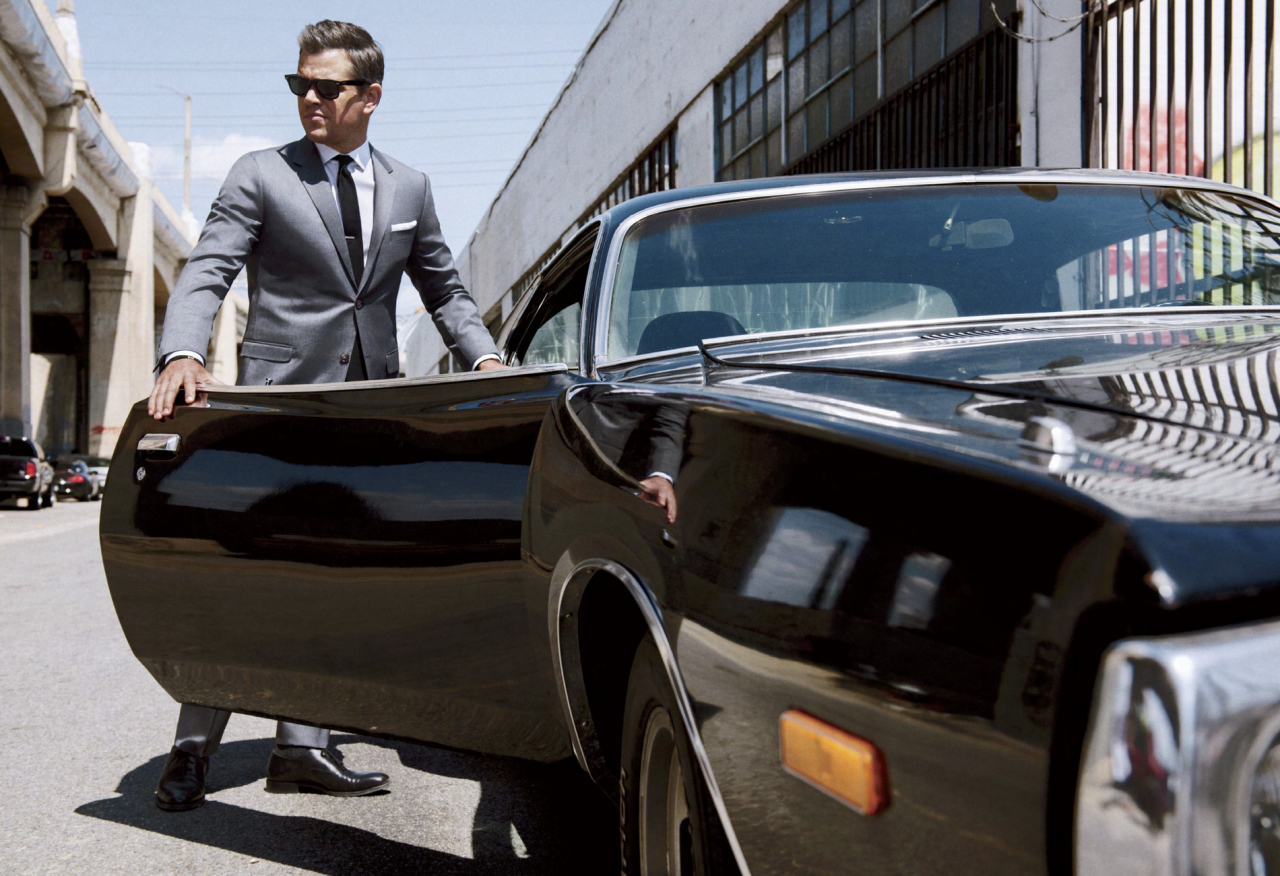
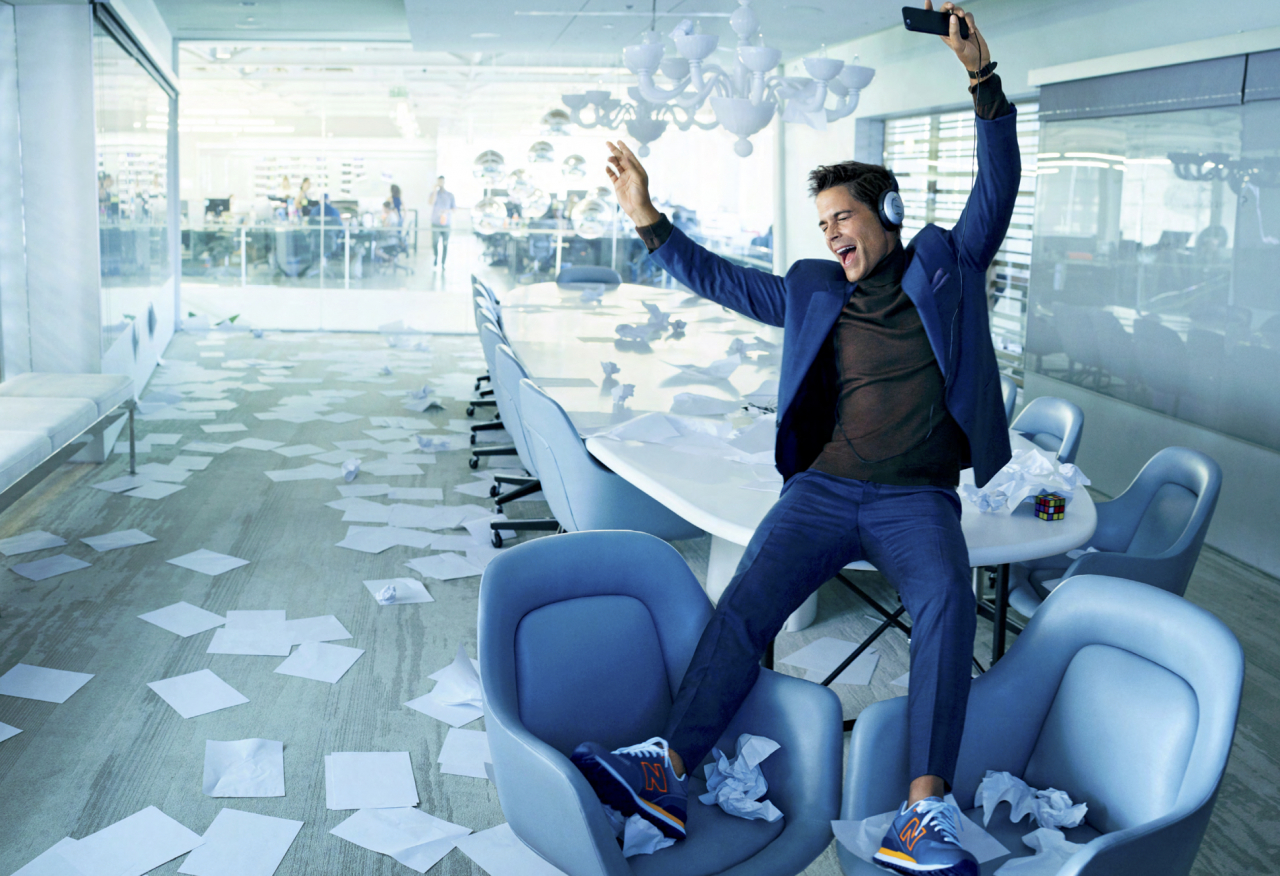
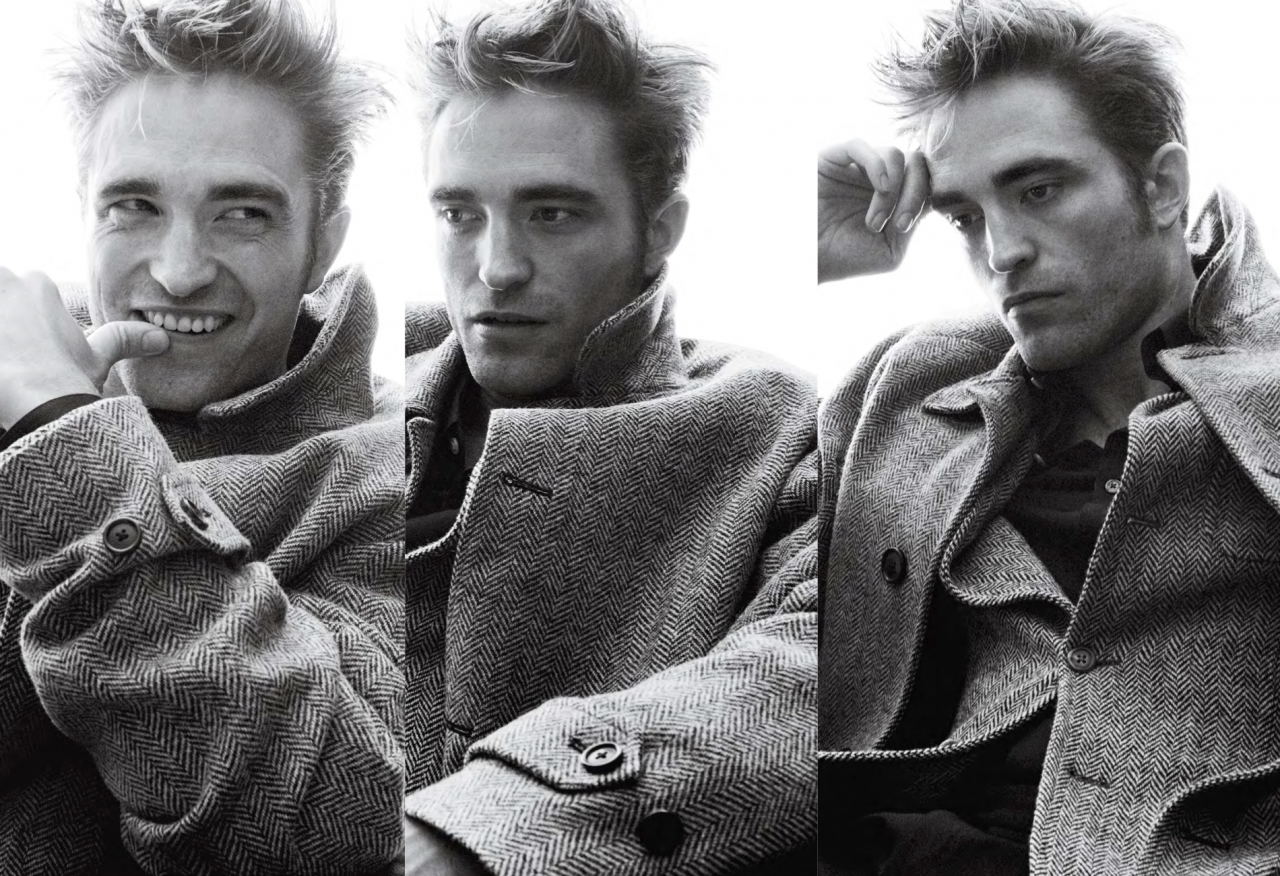
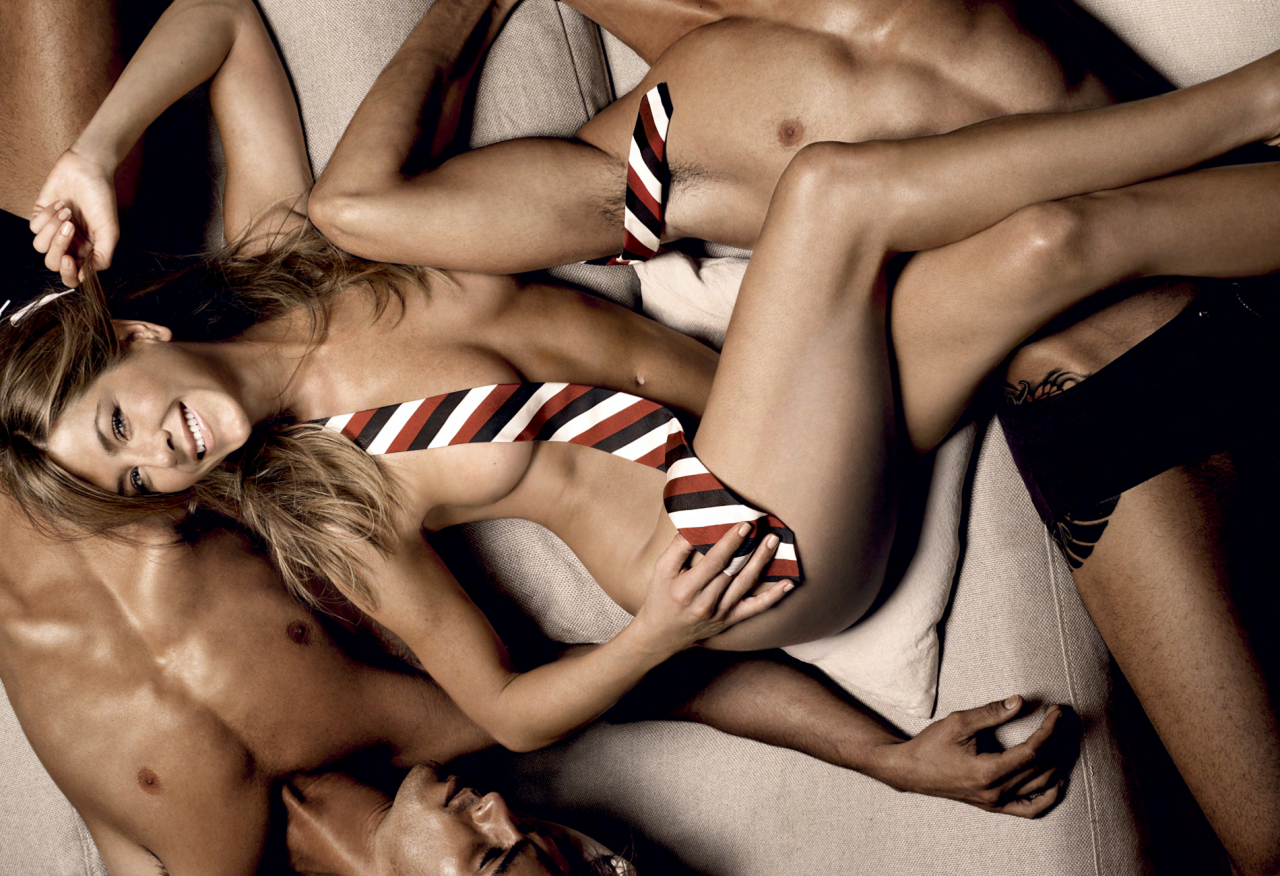


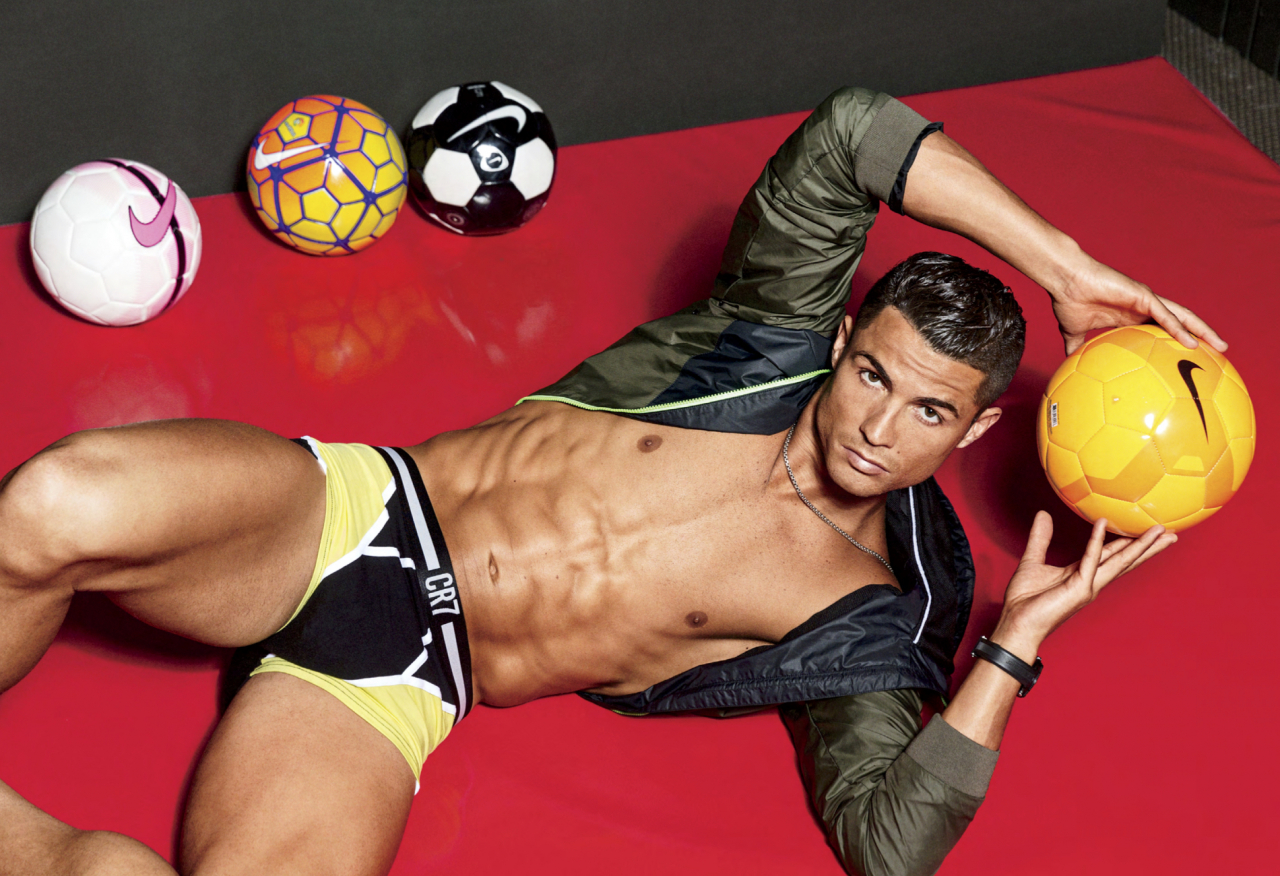
Jock Style
Athletes are among my favorite people to dress. They’ve got gusto and they want to look cool. NBA players are especially willing to turn up the volume with their own style. NFL players are a lot of fun to work with too, maybe none more so than former New England Patriot Rob Gronkowski, who often prefers to be styled in nothing at all.
Roger Federer is a class act and someone who looks great in any kind of clothes, especially when they’re tailored to perfection. LeBron James is a style icon and sets trends, so it’s fun to collaborate with him on a look that hasn’t been seen before.
I love how willing athletes are to try bold things. Sometimes shoots with athletes require gathering far more clothes than usual because I know they’re going to want to play—and I know they really love the idea of being in GQ. To them, it’s like a trophy or a Super Bowl ring.


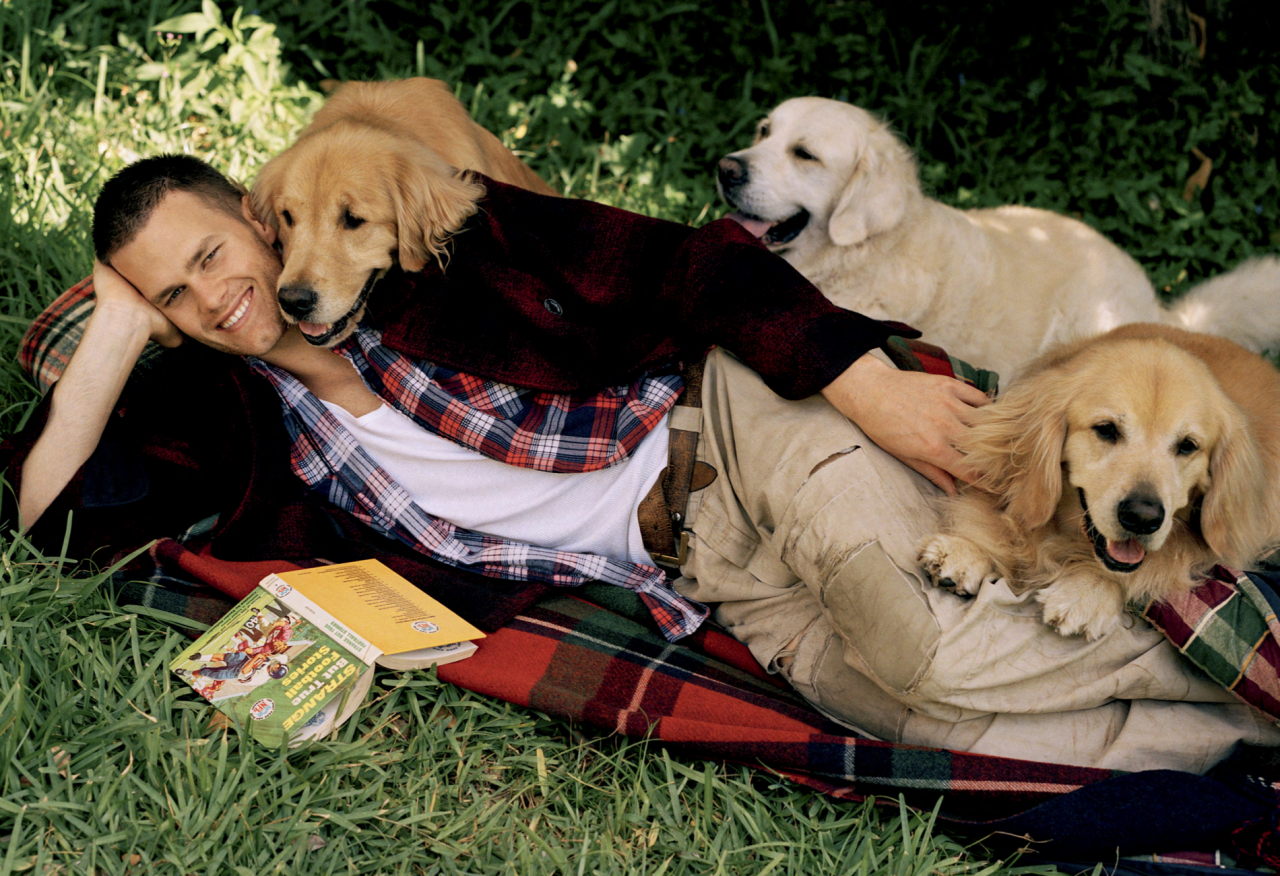
Cruise Control
I love working with Tom Cruise. I feel like we should give him a green blazer for being the guy with the most GQ covers under his belt. Seven covers and counting. At one shoot, Inez & Vinoodh portrayed Tom as a Risky Business kind of dude in a suburban house in L.A. I love the spirit of those images.
For this shoot, I headed to the middle of the desert with the photographer Brigitte Lacombe. We had to find a location near a landing strip, because Tom wanted to fly himself to the shoot. He had only a few hours for us, but he was totally ours during that time.
I wanted to dress him in a beautiful, black Dior suit and have it grow deconstructed as the day went on. We shot him near his plane, in a car, driving a car, on a motorcycle. He was super, super excited with all of it.
After we said goodbye, he jumped in his plane and took off for L.A., in the pilot’s seat. We watched the plane climb and then, when it was over our heads, the world’s biggest movie star turned the thing upside down. It was a terrific show that capped an unbeatable day in the desert with Tom Cruise.


Channing Tatum
It’s such a thrill to work with celebrities at different times in their career. For example, I worked with Channing Tatum when he was a model for GQ. Then, when he became a famous actor, we put him on the cover. In the years that followed, we did three more covers.
Evolution like that is fun to watch and Channing is someone who has become very dear to me. He represents a certain era of GQ. And he loves clothes. He is so playful, so easy to dress. With Channing, you’re not even aware sometimes that you’re shooting a big movie star.
Celebrity Crush
By the early 2000s, every page of GQ was filled with celebrity. It was a great way for us to showcase the clothes, sure, but it provided so much more. We offered readers a glimpse of recognizable people, but the trick oftentimes was to put them in a surprising or visually arresting new context. Always in the back of my mind, I want to inspire readers to think a little differently about who they’re seeing.
This opportunity to play with their image or their look—or to show distinct aspects of their character— has, for years, appealed to the celebrities we’ve worked with, too. They come to the GQ fashion closet hoping to look their very best—and often to get made over in a way. It’s some of the most enjoyable and creatively dynamic work that we do.
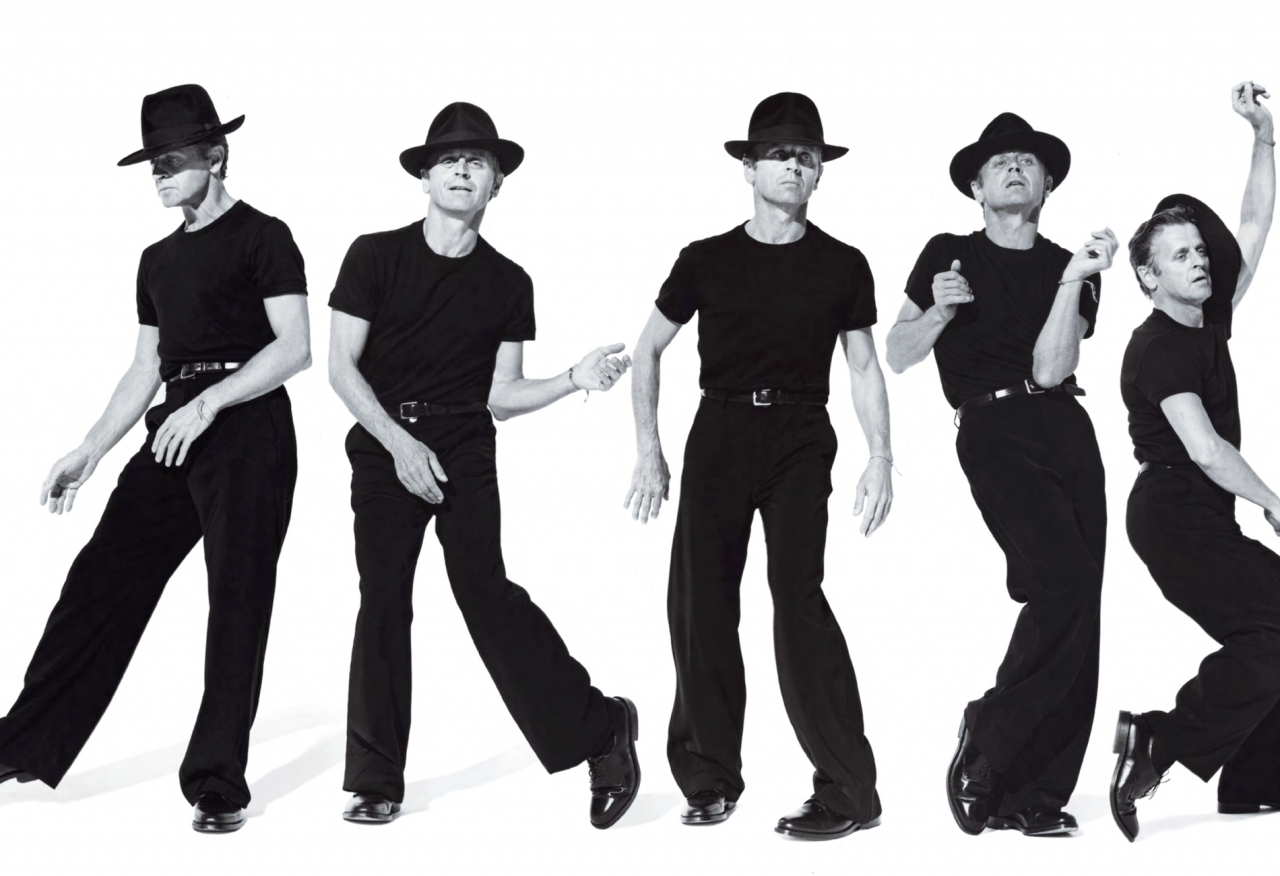

In the Company of Legends
Ralph Lauren and Giorgio Armani are considered the greatest menswear designers of all time. In a way, they are very similar. In a way, they are polar opposites. I love these two pictures of them in white T-shirts; I love the spirit of them just hanging out. In addition to being responsible for some of the world’s most exciting clothes, they are, on a personal level, wonderful to be around.
Getting to know designers, from an editor’s point of view, is a very exciting thing. I love chatting with them about their inspiration, about what they’re feeling, about their perspective on culture. Miuccia Prada, for instance, is a fascinating person to have a coffee with. She’s endlessly curious. She wants to know the buying habits of American men. She wants to know what you think of the latest movie. She wants to share her ideas about the big retail trends of the moment—and she wants to hear what you think.
In 1998, I put together a photograph that would include Hedi Slimane, Marc Jacobs, Helmut Lang, and Tom Ford. The title of the story was “The New Avant-Garde” and Art Cooper practically threw me out of his office. He thought the personality conflicts could be impossible to manage. He said, “You’re going to try to put those four designers in one room together? I doubt if they even like each other.” I said, “I think we can do it. I think it’s important for GQ and I think they’ll be on board.”
Well, we were able to get them together in that room, which was a huge relief. An even bigger relief? Everyone was super happy to be there and got along wonderfully. None of them knew how much I was sweating the whole time.
"Jim Moore is a man of great taste and style. He gets fashion. His keen focus and vision has helped make GQ what it is today."
"Jim is such an institution in menswear."
"Jim Moore has absolutely flawless taste. He epitomizes the very best of American stlye."
Italian Rules
Throughout the 1990s, and certainly after Tom Ford’s powerful show in ’95, it was all about Italian menswear. That’s not to say that American and French fashion weren’t big, but Italy was the driving force. Many of our shoots took place on the streets of Milan, or in this case, in Palermo as we did a modern take on the 1960 movie Purple Noon, the adaptation of the Patricia Highsmith novel, “The Talented Mr. Ripley,” a film that was later eclipsed by the remake starring Matt Damon, Jude Law, and Gwyneth Paltrow.
The sleek suits of Dolce and Gabbana, Gucci, Armani, Ferre, and Versace, were really the cornerstone of men’s fashion. To wear an Italian suit was to say that you’ve arrived, and to shoot them in all the perfect tailoring was a dream.



American Tourister
In the late ’80s, the trend in fashion was to show clothes in their proper environment, whether it be an American flag sweater from Ralph Lauren shot in the Hamptons or safari clothes in Egypt. It was an era of big budgets, big travel, and a spin-the-globe mentality.
I would always try to keep an American spirit to the pictures, trying to make sure that there was some sort of accessibility to the clothes. Yes, you wanted to go away and show your surroundings and create a fantasy, but you also wanted a guy to realize that this is a suit that he could wear at a summer wedding or on a date night, or maybe he could try a fedora with an extra-large brim.
Sartorial cinema was still flourishing in the pages of GQ. But at the end of the late ’80s, things were starting to get a little bit more minimal. And this was our last big push at grandiose shoots in far-flung places.
Sartorial Cinema
For years, we loved the idea of using movies as fashion inspiration. It was a great way to show the clothes while also piquing reader interest. It gave the clothes purpose and occasion.
One of my very favorite of these stories is the one we did with Mario Testino based on James Bond. Jesse Harris played a rakish Bond. We did everything from a harrowing picture in a helicopter at Vasquez Rocks, to this shot of him with parachutes, which required driving out to Joshua Tree National Park. Over the course of two days, we covered hundreds of miles and shot 15 different locations. It was a tour de force and a portfolio that I will never forget.
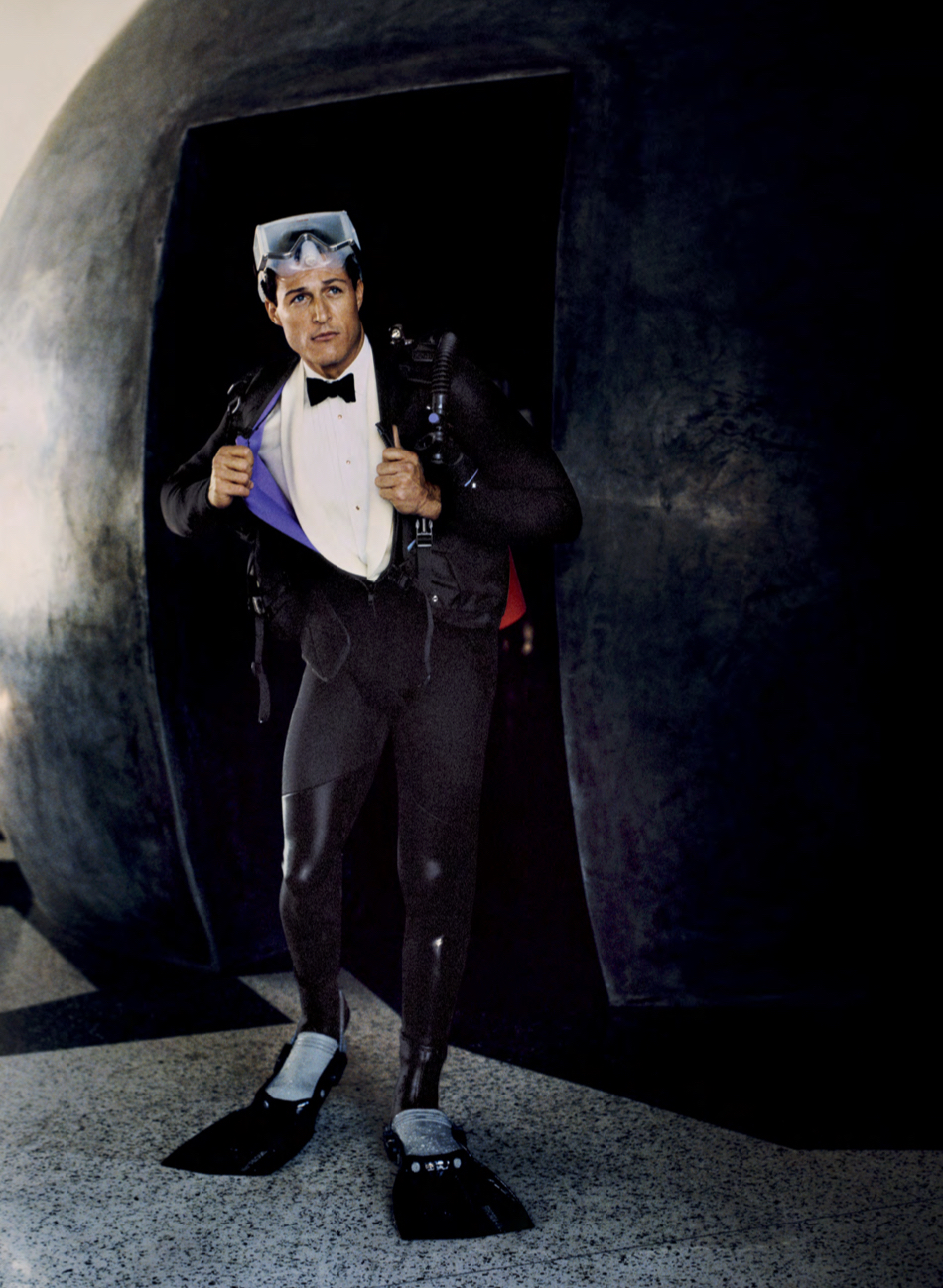
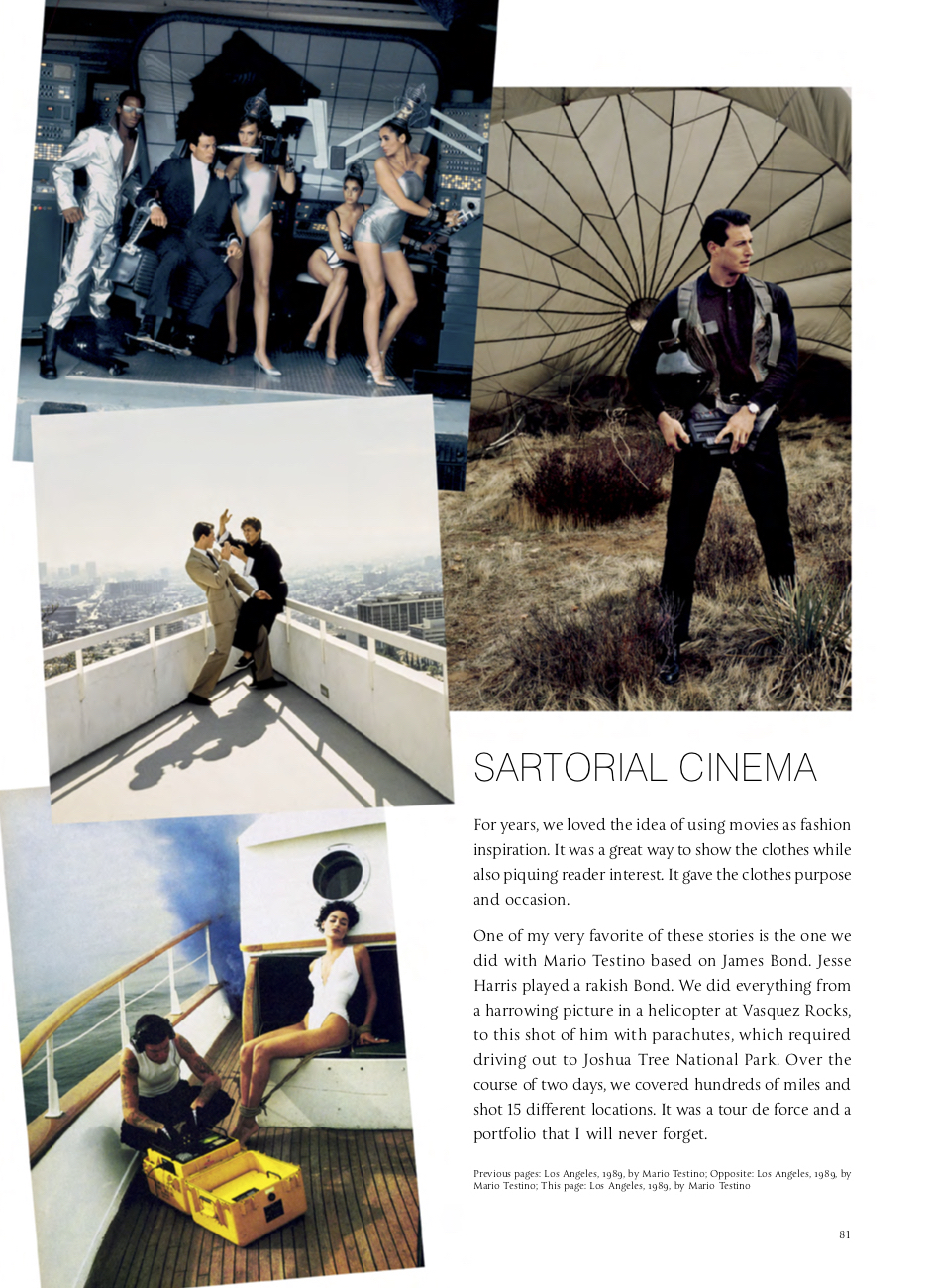
Boys and Super-Girls
Throughout my career, I’ve had an opportunity to work with a lot of female models. Adriana Lima, Karolína Kurková, the list goes on and on. But back in the ’80s, it was all about Cindy Crawford and Linda Evangelista and Stephanie Seymour. Many of these women made their debut in GQ, usually in the swimsuit issue that we did as a precursor to Sports Illustrated every year.
It was my idea to shoot Cindy in a fall fashion story with Arthur Elgort. We called it “Cindy Rules,” and it was basically my take on the fall season and trends. We posed her in a gang of good-looking male models. She was precise and professional and the shots came out beautifully.
As for Linda, it was very early on in her career that Steven Meisel called me and said that he was interested in using a new model for the GQ shoot. In walks Linda, 5’11”, looking beautiful. A model who, until Steven grabbed her, had not been working a lot, but had moves like Jagger. It was incredible. She was teaching the boys how to walk, and I’ll never forget this iconic picture with Tim Easton. They were having a blast and Steven was loving it. We did a swimsuit story with Herb Ritts in Hawaii that featured Stephanie Seymour. Loved Stephanie’s energy. She was so sweet and gorgeous. What an incredible opportunity to work with these women.

“For me, fashion feeds my desire to not only look at clothes and edit them and give them a purpose, but also to work with photographers and help direct the shoot."




Singular Vision
I’ve always loved the work of Denis Piel, the photographer who was a giant presence at Vogue magazine in the early ’80s. I just loved his take on cinematic fashion—it felt totally modern, like he was creating movie stills without ever copying movie stills.
I made it a point to meet Denis, and discuss with him the idea of shooting for GQ. At first, he was standoffish. “Men’s fashion? I’m really only a women’s fashion photographer,” he told me. After a while I lured him into the fray, and he became one of GQ’s greatest photographers.
One of my favorite shoots with him was a trip we took to Hawaii. The pictures were both arresting and sensual. I love the way Denis works. I love the fact that he finds the moment and captures it. He doesn’t let the models get too model-ly. The scenes feel real. He takes things that are slightly disheveled and adds glamour and chicness, and I really love his work, even to this day.
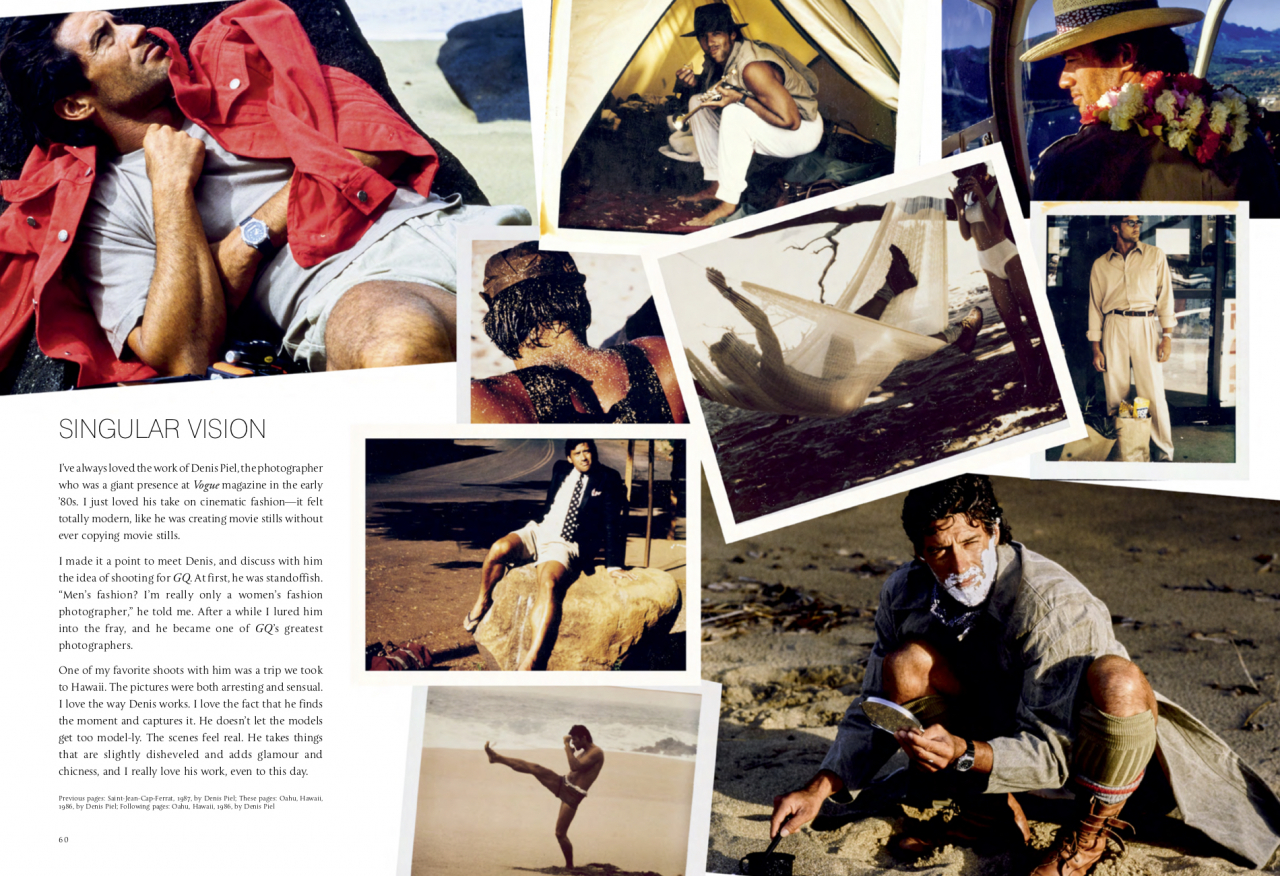

Avedon’s Touch
In the ’80s, I lived on 71st Street between First Avenue and York. Richard Avedon’s studio was on 75th Street. This became very convenient for me—being only four blocks away—as we’d work together on over 30 covers during a span of about three years. If I was doing a shoot with him, I would usually take the clothes home with me and then head over to the studio in the morning.
Dick was unlike any other photographer. An icon. In those days, everyone came to his studio and he was somehow always the most famous person in the room. I remember our first couple of shoots feeling like I hadn’t connected with him. Then his studio manager, recognizing how much taller I was than Dick, said to me, “Sit on the edge of the chair, he loves people that he can have eye contact with.”
Sure enough, Dick and I hit it off and before long he was sending me a packet of Polaroids every month. So many ideas for covers. With a grease pencil, he’d indicate on these photos where the GQ logo should be placed. In this case, he conceptualized a David Letterman cover, showing me exactly how it all might look—complete with a necktie that we’d wire in the air for effect. Before the shoot, I knew I’d better wire up some ties and have them ready. In the end, we didn’t use the wired tie trick. But I cherish these Polaroids and all the amazing shoots I got to do with Dick, especially our session with a 23-year-old Michael Jordan—a guy who’d become every bit the legend that Richard Avedon was himself.
The Big ’80s
Enter the era of big shoulder pads and power ties. Our mission at GQ was not only to document what was happening in fashion, but push it forward a bit. We wanted to celebrate the brashness of the ’80s—a big part of that meant focusing on the power suit that dominated the sartorial scene. The power suit that we helped popularize consisted of a dark suit, a bold striped shirt, and a giant polka dot tie. And that combination would show up time and time again in the pages of the magazine in those days.
This was the era during which I became first acquainted with the genius of Steven Meisel. Some of my favorite shoots were with Steven. He was the ultimate modernist. We were kindred spirits because we both liked the idea that men could look cool and strong and modern. And so, we would spend a good deal of time—certainly not as much as Bruce Weber would on location— in preparation. We would spend half a day doing fittings, teaching the models how to wear the clothes, instructing them on how to jump, getting the lighting just perfect. Steven was a master. He had been an illustrator before he became a photographer and he certainly illustrated the ’80s in an incredible way.


But also, he knew how to soften the ’80s. We worked together on a story that became notorious and helped usher in the era of minimalism in menswear. It featured a guy in a black coat and a skinny suit, with low-profile Beatle boots. With that one picture we said, “It’s time to think slick and modern. It’s time to think about the ’80s, but also about what’s to come.” For me, that was a defining moment, one that would set the tone for what I brought to the pages of the magazine in the years that followed.
Steven was such fun to work with. His sets were always filled with loud music, giant mirrors, and way too much time in hair and makeup. But that’s what made them great. He would take these Polaroids for you, and cut them up and put them in a little tray that he would have on his lap. He would paste the pictures and put the whole thing together for you. His approach was totally modern and fresh. It was totally where I wanted to be— and where I thought the magazine should be at that moment.
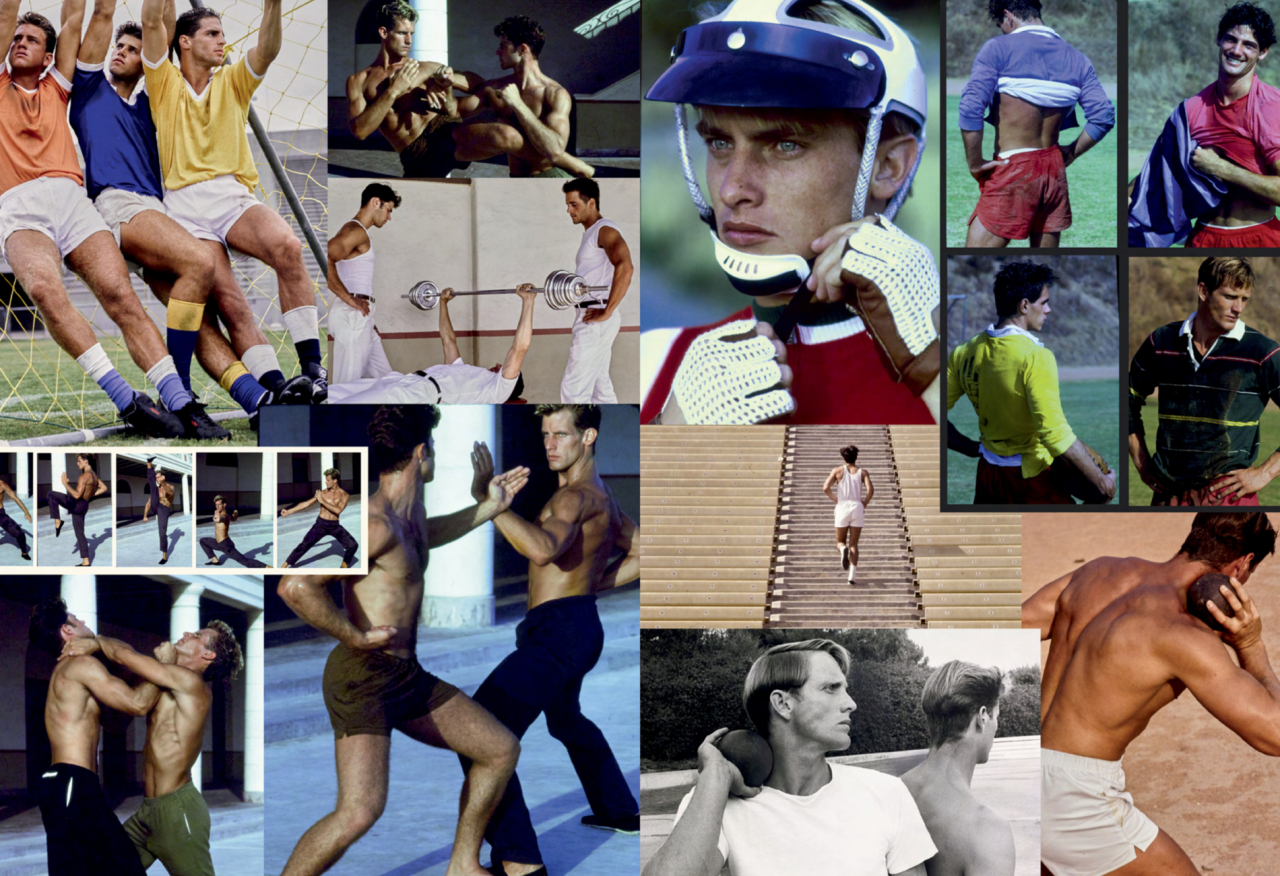

My Perfect Fit
I arrived in New York in the summer of 1977, during what felt like momentous times. It was the summer of the Son of Sam, the summer of the blackout, the summer just before Studio 54 opened. The big event that summer for me—a class tour—was more quotidian by comparison. But it changed the course of my life.
I had moved to New York to attend the Tobé-Coburn School for Fashion Careers, which had arranged a trip to the offices of Condé Nast magazines. Even before the tour ended, I felt the wonderful sting of realization: This, I decided, is what I wanted to do.
GQ wasn’t yet owned by Condé Nast, but soon after the tour, the school helped me land an internship there. The work wasn’t glamorous: it mostly involved stuffing envelopes for the business side of the magazine. But in the evening, I would walk over to the fashion department and volunteer whatever help I could. If trunks needed packing or socks needed arranging, I was their guy.
Hunks & Heroes: Book Tour
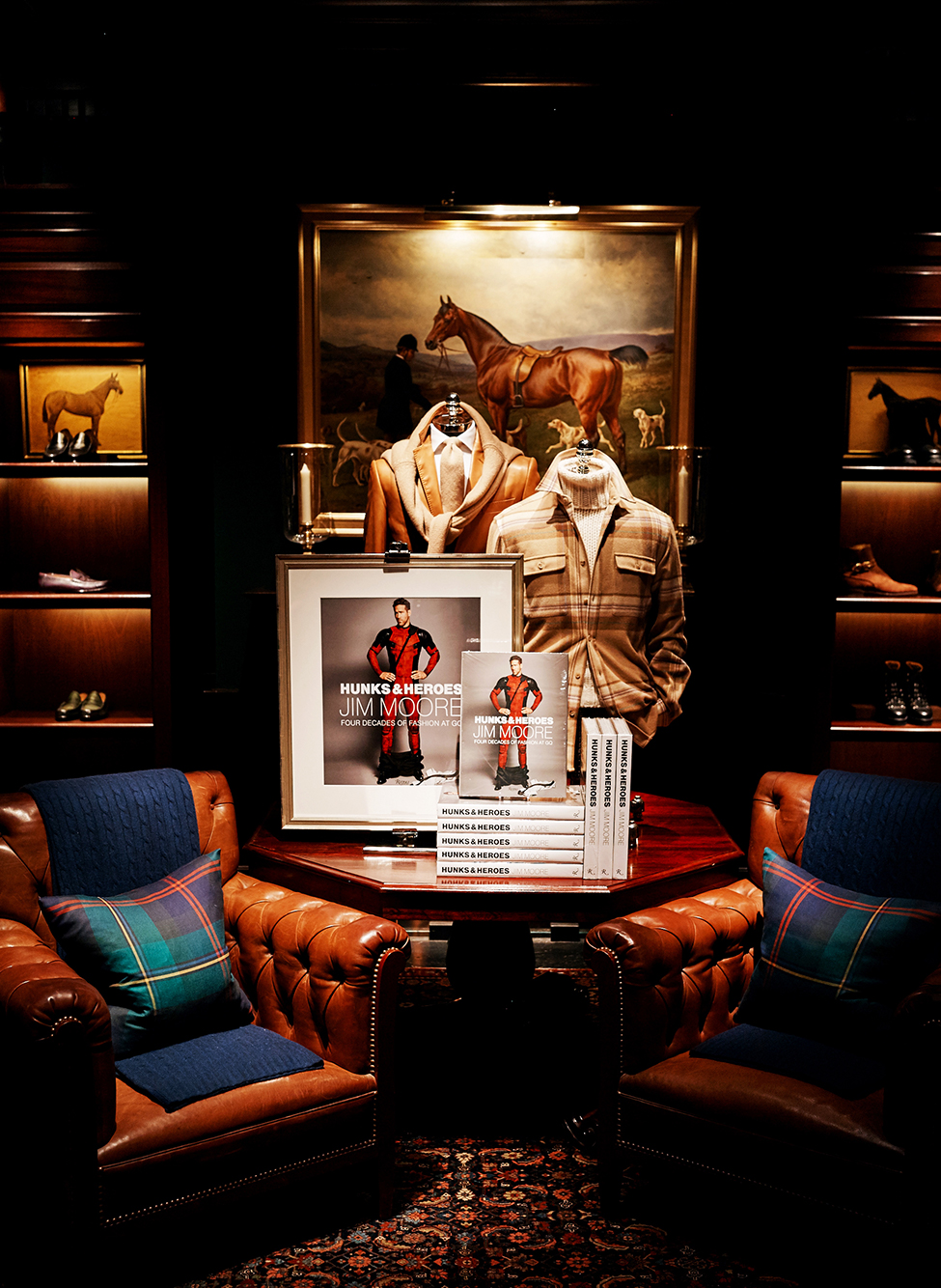
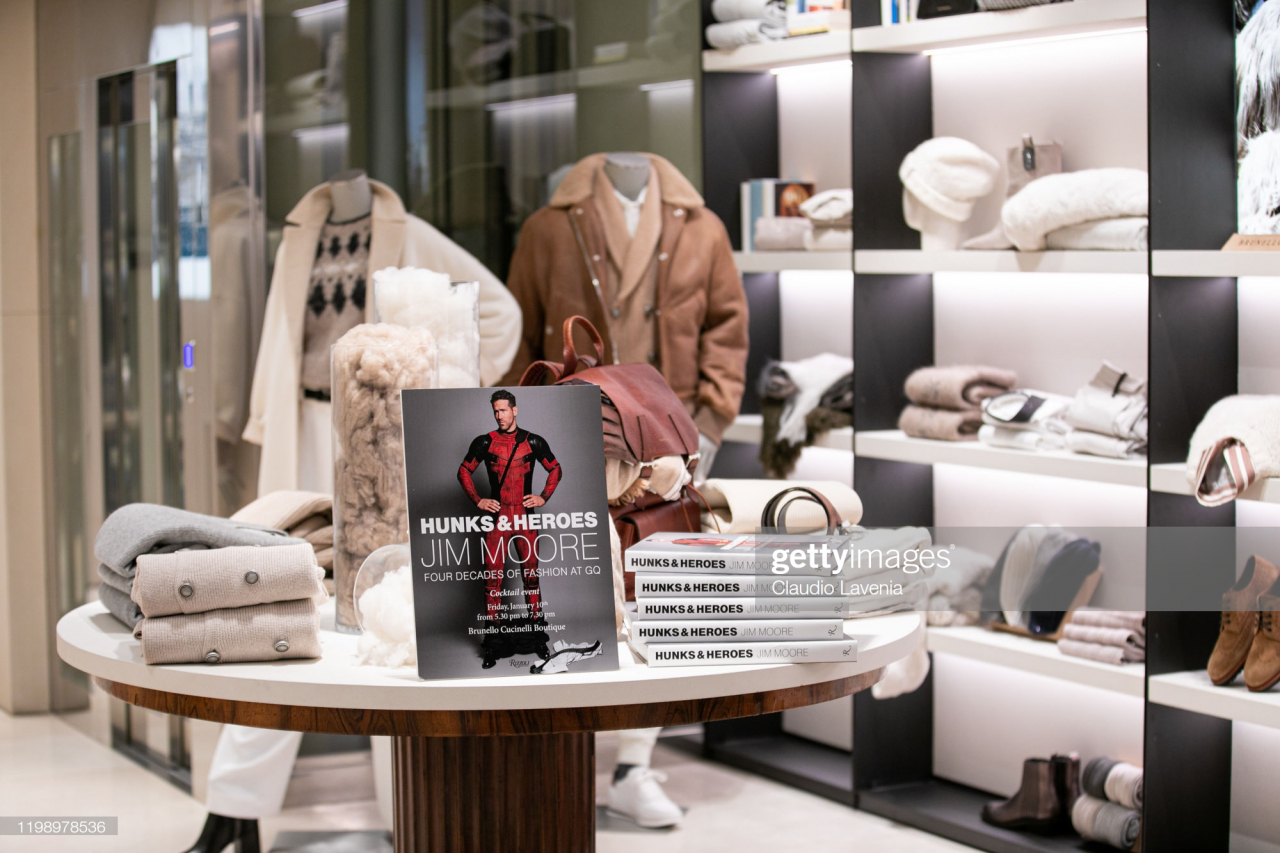
Todd Snyder
Jim Moore has collaborated with Todd Snyder on both his 2019/2020 runway shows and campaign photo shoots.
“We’ve known each other from back in the J. Crew days — when [Snyder] left [in 2008], he was scared to death and I held his hand a little and said, ‘It’s going to be fine,’” Moore said of his long-standing relationship with the designer, who led men’s wear at J. Crew for several years. “Then I saw him at a trade show, and he was like, ‘Can I show you these few things I’ve been working on?’ I told him to put in a label with his name on them then and there.…He probably would have done it anyway, but I have to say I was the one who gave him the kick in the pants to get it going.”
CB2 + GQ
The CB2 + GQ collection brings together a mix of materials, styles, and eras—nodding to iconic designs from the ’30s, ’70s and ’80s—for a look that’s as sophisticated as a tailored suit, but as comfortable as your favorite hoodie. This is how style comes home.
“We wanted these pieces to be highly functional for everyday life, but also eye-catching and beautiful, even when you’re not using them."
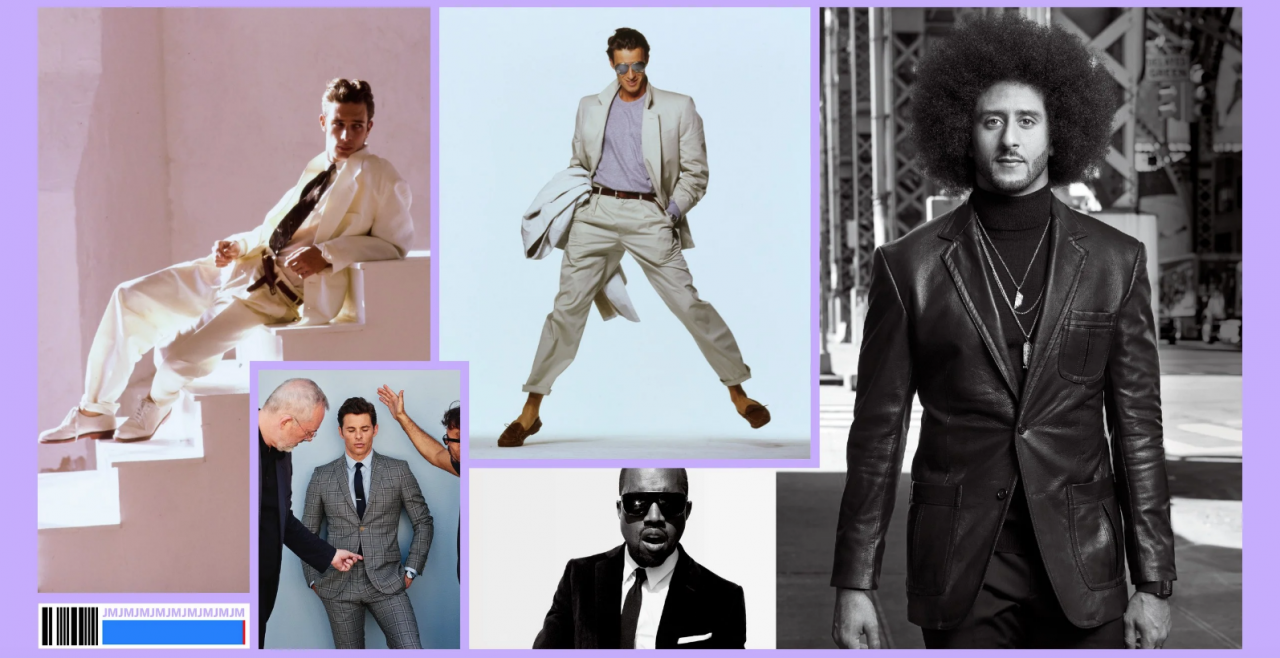
PRESS
JIM MOORE
Please update your browser to access Creative Exchange Agency.





































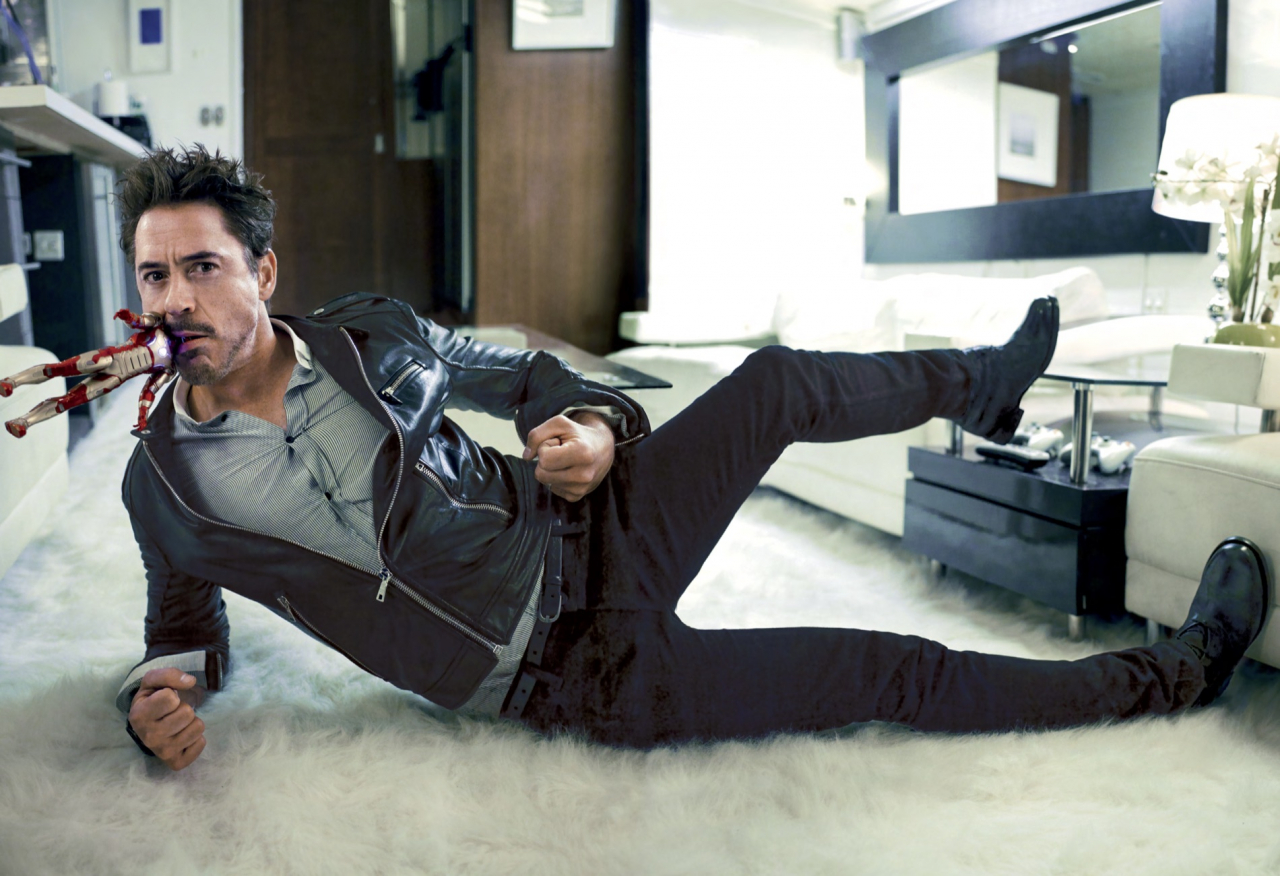



































![[Private for approvals] Ralph Lauren : Jim Moore Book Event](https://cdn.cxainc.com/cxaprod/wp-content/uploads/2020/02/jim-moore-jon-hamm-hunks-and-heroes-event-ralph-lauren-bfa-1280x1024.jpg)



















